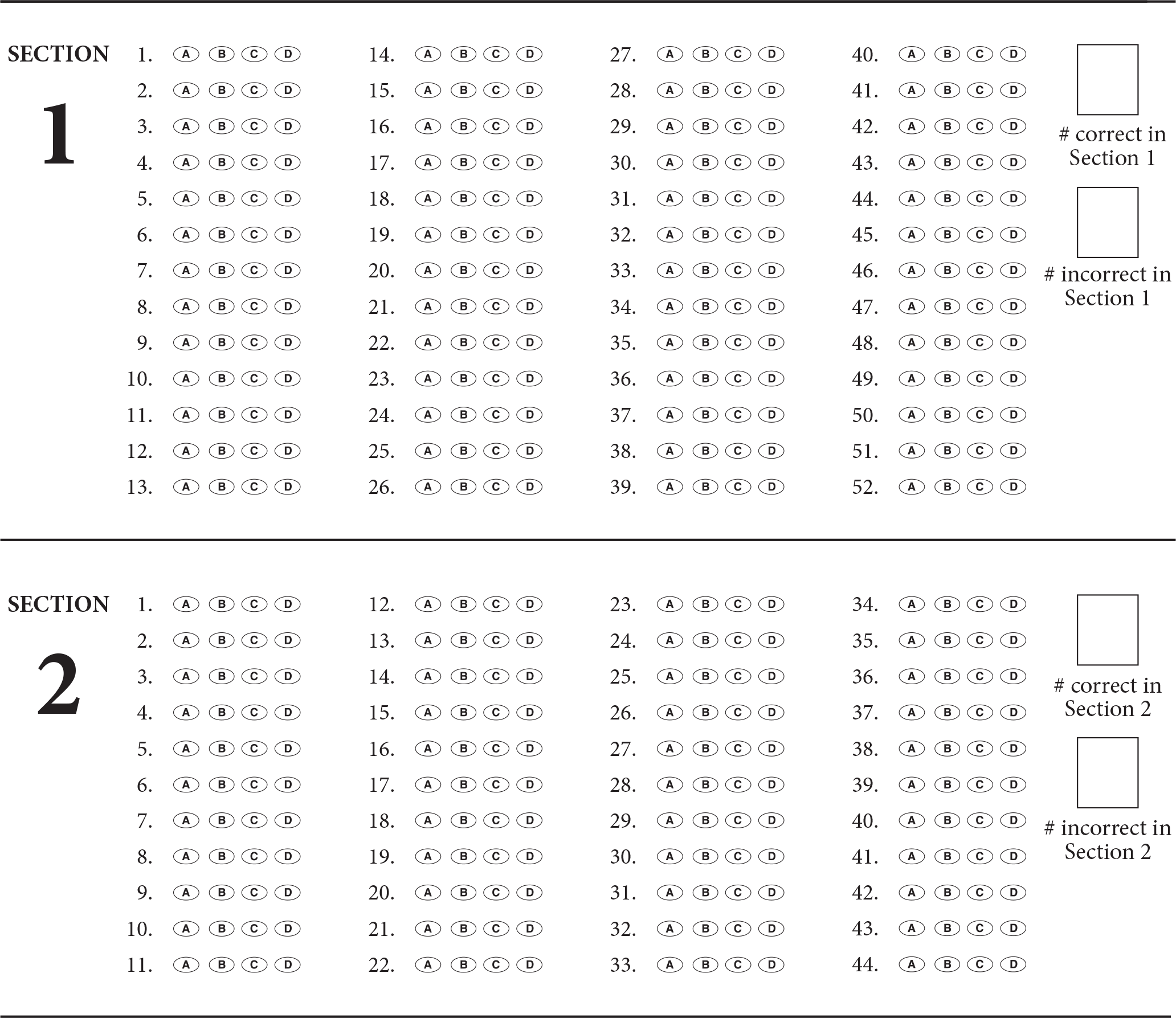
You will see an answer sheet like the one below on test day. Review the answer key following the test when finished.
When testing, start with number 1 for each section. If a section has fewer questions than answer spaces, leave the extra spaces blank.

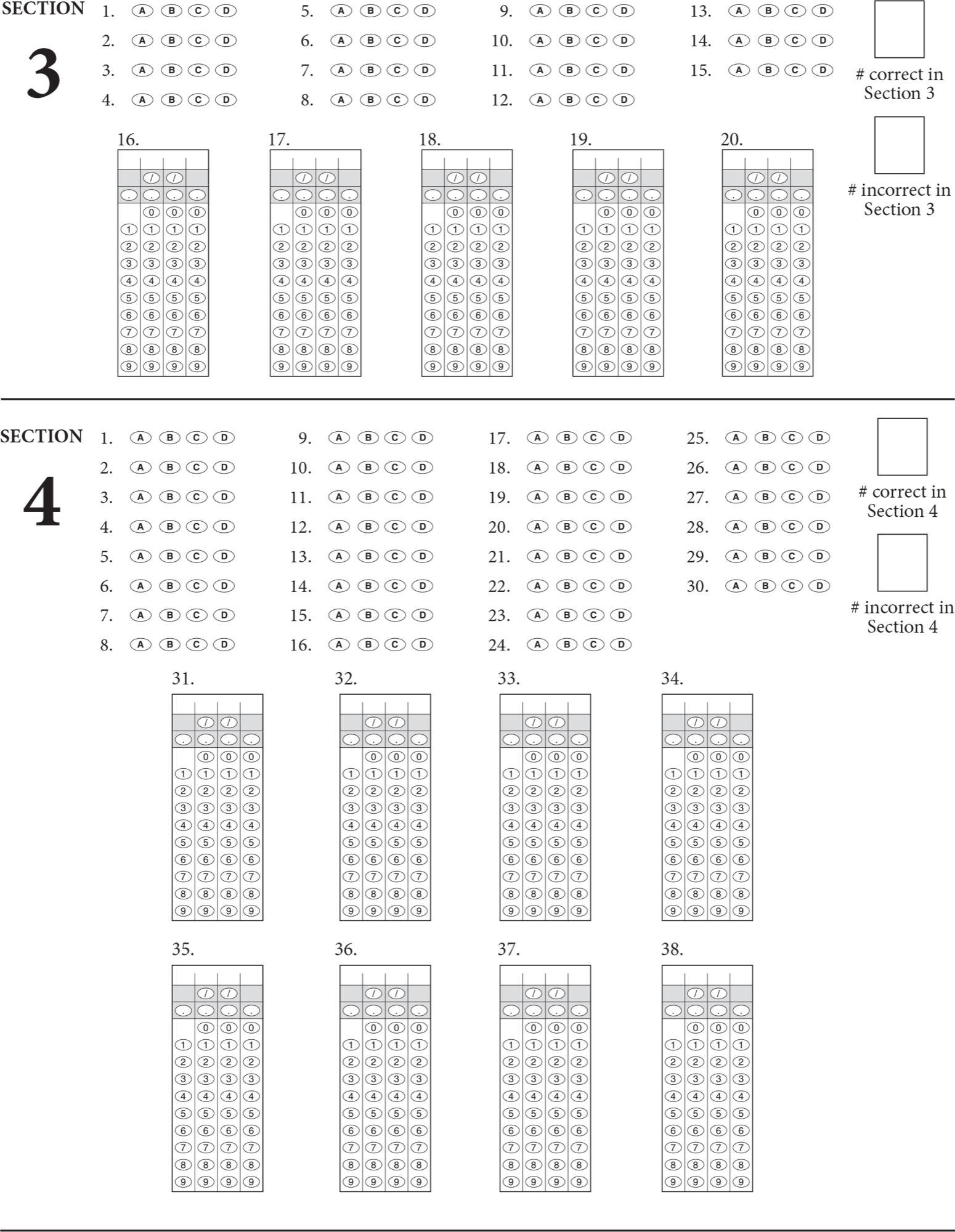
65 Minutes—52 Questions
This section corresponds to Section 1 of your answer sheet.
Read each passage or pair of passages, then answer the questions that follow. Choose your answers based on what the passage(s) and any accompanying graphics state or imply.
Questions 1–10 are based on the following passage.
This passage is adapted from A Study in Scarlet, Sir Arthur Conan Doyle’s first story in his acclaimed Sherlock Holmes series. In this excerpt, the narrator, Dr. Watson, observes Mr. Holmes, with whom he has recently entered into a shared housing arrangement, although he knows very little about this new roommate as of yet.
According to the passage, as time passes, Watson finds Holmes
As used in line 5, “casual” most nearly means
As presented in the passage, Sherlock Holmes is best described as
As used in line 8, “torpor” most nearly means
The passage most strongly suggests that which of the following is true of Holmes?
Which choice provides the best evidence for the answer to the previous question?
The passage most strongly suggests that Holmes believes which of the following about learning?
Which choice provides the best evidence for the answer to the previous question?
The comparison of the brain to an attic mainly serves to
The decision to tell the story from Watson’s point of view suggests that the author
Questions 11–20 are based on the following passage.
This passage is adapted from a speech given by President Woodrow Wilson to Congress on January 8, 1918. Here Wilson proposes a 14-point program for world peace. These 14 points became the basis for peace negotiations at the end of World War I.
Based on the first two paragraphs, which choice best identifies Wilson’s purpose in making this speech?
Which choice provides the best evidence for the answer to the previous question?
As used in line 31, “frankly” most nearly means
Based on the information in the passage, it can reasonably be inferred that in the past,
Which choice provides the best evidence for the answer to the previous question?
As used in line 44, “consistent” most nearly means
In lines 45–46 (“A free . . . colonial claims”), Wilson argues that to preserve peace, nations must
Points VI through VIII serve as evidence to support which claim made by Wilson throughout the speech?
Which of the following approaches to international relations is most similar to Wilson’s approach?
Which choice best describes the developmental pattern of Wilson’s argument?
Questions 21–31 are based on the following passages and supplementary material.
The following passages are concerned with meditation, particularly the practice of mindfulness. Passage 1 provides an overview of meditation, while Passage 2 focuses on a particular practitioner, U.S. Representative Tim Ryan.

The central idea of Passage 1 is that meditation and mindfulness
Passage 1 most strongly suggests that which of the following is true?
Which choice provides the best evidence for the answer to the previous question?
As used in line 43, “compelling” most nearly means
In Passage 2, what can be inferred about the author’s point of view on meditation?
Passage 2 most strongly suggests that which of the following is true of Mr. Ryan?
Which choice provides the best evidence for the answer to the previous question?
As used in line 96, “secular” most nearly means
In Passage 2, the author’s use of the word “chatter” (line 102) implies that
Both passages support which generalization about mindfulness meditation?
Data in the graph provide most direct support for which claim from the passages?
Questions 32–42 are based on the following passage.
The following passage describes possible causes and impacts of colony collapse disorder, the mysterious disappearance of honeybee colonies.
The primary purpose of the passage is to
The author's point of view is most similar to that of
The author uses the word “mysteriously” (line 6) to emphasize
As used in line 27, “plights” most nearly means
The author uses the fact that no bees are found in a hive after a colony collapses to
Which choice provides the best evidence for the answer to the previous question?
As used in line 59, “foraging” most nearly means
The passage most strongly suggests that
Which choice provides the best evidence for the answer to the previous question?
According to the passage, which of the following events has occurred in response to colony collapse disorder?
Based on information in the passage, which statement best describes the relationship between honey bees and human beings?
Questions 43–52 are based on the following passage and supplementary materials.
The following passage describes the potential problems caused by debris that humans have left behind in space.
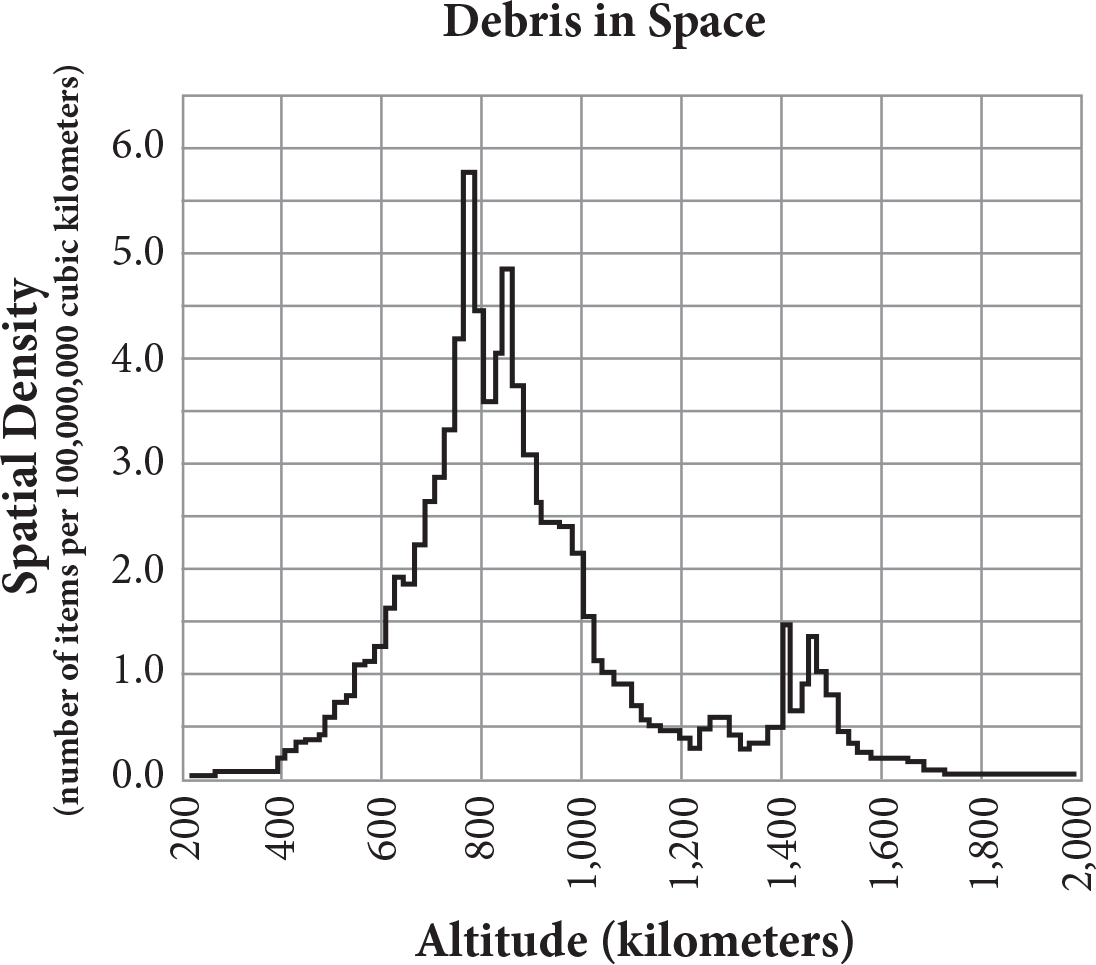
The passage is primarily concerned with the
Which choice provides the best evidence for the answer to the previous question?
The second paragraph helps support the central idea of the passage by providing
According to the passage, why does space debris created by humans pose a greater threat than meteoroids?
Which of the following pieces of evidence most strengthens the author's central claim?
As used in line 55, “obsolete” most nearly means
Based on information in the passage, which conclusion can reasonably be inferred?
Which choice provides the best evidence for the answer to the previous question?
As used in line 67, “implemented” most nearly means
Based on the passage and the graphic, if NASA were to place a new satellite into orbit, which altitude range would pose the greatest danger?
35 Minutes—44 Questions
This section corresponds to Section 2 of your answer sheet.
Each passage in this section is followed by several questions. Some questions will reference an underlined portion in the passage; others will ask you to consider a part of a passage or the passage as a whole. For each question, choose the answer that reflects the best use of grammar, punctuation, and style. If a passage or question is accompanied by a graphic, take the graphic into account in choosing your response(s). Some questions will have “NO CHANGE” as a possible response. Choose that answer if you think the best choice is to leave the sentence as written.
Questions 1–11 are based on the following passage.
Like most chemists, a laboratory was where Constantin Fahlberg worked on his research. However, the discovery for which he is famous occurred not in the laboratory, but at supper.
Chemical compounds are derived from coal tar, which is what Fahlberg began working on as a research chemist in a laboratory at Johns Hopkins University in early 1878. Coal tar was a by-product of steel manufacturing, and compounds derived from them had been used as medicines and in dye formulations. Fahlberg, and others in the laboratory, were studying ways to add different chemicals to molecules found in coal tar to see if the new compounds formed had other useful properties.
One night in June, Fahlberg finished a long day of work; he had been so demanding in his research that he forgot to eat lunch, so he hurried to his supper without stopping to wash his hands. He might have considered handwashing unnecessary because he had not handled any toxic chemicals that day, or he might have just been so hungry he did not think about it.
The bread tasted so sweet that Fahlberg thought he might have picked up some cake by mistake. He rinsed out his mouth with water and then patted his mustache dry with a napkin. He was surprised to find that the napkin tasted sweet as well. He took another sip of water and realized that the water now tasted sweet. The bread, napkin, and glass of water had something in common. He then tasted his thumb, and it tasted sweeter than any candy he had ever had.
[1] Fahlberg rushed back into the lab and began to taste the contents of every beaker he had used that day. [2] Fortunately, he had not worked with anything poisonous or corrosive, or the story may have a different ending. [3] He had discovered saccharin, which he named for its intense sweetness. [4] He found a sweet-tasting mixture of chemicals and worked for weeks to isolate the sweet substance from the rest and to determine its chemical composition. [5] Although it is many times more sweet tasting than sugar, it cannot be used for energy by the body and therefore does not contribute to calories consumed or energy use. [6] Soon after Fahlberg started making saccharin commercially in 1886, it became popular with people who needed to lose weight and with diabetic patients who needed to avoid sugar.
At this point, the writer wants to create an ideal transition to the next paragraph. Which choice most effectively accomplishes this goal?
Which choice most clearly and effectively conveys the central idea of the paragraph?
To make this paragraph most logical, sentence 4 should be placed
Which of the following sentences would provide the best conclusion for the passage?
Questions 12–22 are based on the following passage.
Throughout history, philosophy has shaped culture in pivotal ways. From the ancients to the postmoderns, great philosophers have spoken powerfully within there respective contexts. For modern Western culture, one philosopher’s formative impact surpassed his contemporaries: France’s René Descartes. Called “the father of modern philosophy,” Descartes crucially influenced Western perspectives on knowledge and rationality.
This 17th-century philosopher ushered Western thought through an era of great public doubt and upheaval and into the age of self-reliant rationalism. Political and religious tradition and authority—the obvious premodern sources of truth and knowledge—were being questioned and rejected as new ideas identified potential inconsistencies. Because foundations of truth seemed to be crumbling, Descartes’s writings proposed an alternative foundation: individual reason.
An expert in many fields, Descartes’s work would on many levels serve to establish foundations for modern culture and science. This emphasis on reason, as opposed to traditional or authoritative bases for certainty, would become the modern mechanism for determining truth and knowledge.
Modern culture would come to cherish this as an intellectual ideal. In his most famous project, Descartes sought certainty by mentally stripping away every layer of knowledge that was remotely possible to doubt. Descartes arrived at his memorable conclusion, “I think, therefore I am,” he could only be certain of the fact that he was thinking.
Building from there, he could work toward rational certainty in other areas of knowledge.
Emphasizing the importance of building knowledge on certain evidence, Descartes modeled a reversal of the reigning scientific processes (which typically worked backward from observation to explanation). Descartes founded the modern scientific method, in which research and study could be reliably conducted based on certain evidence. Scientific method, and the emphasis on human reason, would become standard elements of modern thought. Though reimagined by ensuing culture and philosophy, these changes propelled by Descartes’s initial contributions to that conversation.
Some people may argue that it is impossible to separate what Descartes accomplished from the things his contemporaries did. Certainly, most scientists and philosophers influence and build on each other’s work. But Descartes was the crucial voice in early modern dialogue. His expertise drew trusted readership, and his well-read ideas pointed culture down the road to modern understanding—a road paved with reason, modernism’s great intellectual virtue. Shifts begun by Descartes’s work would influence the very structure of ideas and systems in the modern world, from research methods to public processes like government and health systems.
At this point, the writer wants to add specific information that supports the central claim of the paragraph. Which choice provides the strongest support?
Which sentence should be added in front of sentence 1 to clarify the topic of the paragraph?
Which choice most logically follows the previous sentence and sets up the information that follows?
Questions 23–33 are based on the following passage.
Art is never immovable, nor is it meant to be. A poem written today looks and sounds vastly different from a poem by Shakespeare, and a modern symphony no longer resembles one by Beethoven. So it is with the novel, that still relatively young member of the literary family (many consider Don Quixote, published in 1605, to be the first). The novel is evolving to reflect the changing world; for better or for worse.
The novel, while well regarded, would never match the poem as the ideal form for conveying the struggles of humanity. A few quotations from acclaimed novelists of the past illustrate how loftily the form was once regarded. G. K. Chesterton said, “A good novel tells us the truth about its hero; but a bad novel tells us the truth about its author.” English writer Ford Madox Ford believed the novelist played an important role as a recorder of history. Ford said of his friend Joseph Conrad, “We agreed that the novel is absolutely the only vehicle for the thought of our day.”
It’s not that over centuries writers of novels have shed these ambitions; novels today still address complexities and intricate social dynamics. However, in recent decades, popular novels and their film adaptations have driven the novel market in a broader direction. Novels are considered just another entertainment medium, which are now available on digital devices, one that ought to enthrall its passive reader and relieve him or her of the stress and tedium of life. The difficulties, challenges, and triumphs of real life are less often the subject of popular novels; instead, escapist tales of fantastical lands and escapades are more popular.
It is rare today for a novelist to attempt to ask, “What does it mean?” Instead, we strive to provide the reader with an answer to the question, “What happens next?”
“Publishers, readers, booksellers, even critics,” critic James Woods wrote, “acclaim the novel that one can deliciously sink into, forget oneself in, the novel that returns us to the innocence of childhood or the dream of the cartoon, the novel of a thousand confections and no unwanted significance. What becomes harder to find, and lonelier to defend, is the idea of the novel as—in Ford Madox Ford’s words—a ‘medium of profoundly serious investigation into the human case.’ ’’
Which choice most effectively establishes the main topic of the paragraph?
Which choice best improves the sentence?
At this point, the writer wants to add specific information that supports the ideas presented in the paragraph. Which choice provides the most relevant detail?
Questions 34–44 are based on the following passage and supplementary material.
Kelli Blake, a chemical engineering major, recently excepted a summer internship with BP, an international energy company, to gain career experience. Some argue against the value of internships, claiming they pay very little and can involve performing boring tasks, yet Kelli feels her internship is critical to helping her discover whether engineering is right for her.
Kelli wants a real-world perspective on information she has gained in her classes. Her internship with a corporate leader is affording her the opportunity to apply her conceptual knowledge to tasks inside a major oil company. During this internship, for example, Kelli is working on a glycol dehydration project; she will be using the classroom skills she learned from thermodynamics, organic chemistry, and more. She can later add this project to her résumé and portfolio, giving her an edge over other college graduates.
Offshore engineers have many rules and regulations. Helicopter underwater egress safety training is required of employees traveling to offshore facilities, so she will stand out from other applicants by already being safety certified. “I have a new appreciation for the protocols followed by engineers at refineries,” she states. Kelli believes that gaining new skills and showing she can apply her classroom knowledge to real situations will give her an advantage over her competition should she decide to join BP.
Everyone has their own reason for wanting to become an intern. Kelli has several other reasons behind her decision. For example, Kelli wants to meet people to learn about the variety of careers available, from entry level to senior engineer. She will accomplish all of her intern goals by working on technical projects, attend “lunch and learn” meetings, watching webinars, and shadow coworkers.
What are some further benefits of internships? Besides gaining exposure in the field, Kelli is networking. The most important person to her now is her mentor, Dan, a senior engineer who can help her grow professionally by answering her questions. Gaining valuable contacts and good role model. These are other reasons she has pursued this internship.
Kelli is now an acting member of a corporate team. She realizes she will be learning a lot about the industry and will benefit from adopting an entirely new vocabulary. She views her internship as an adventure, one in which engineering teams worldwide must work collaboratively and efficiently.
It is worth it to give up her summer, Kelli argues, because though she is losing her summer she is doing the job of an actual engineer through her internship. Moreover, she views the experience as one of the best ways to learn about her field and industry, which typically offers around 35 internships per 1,000 hires.
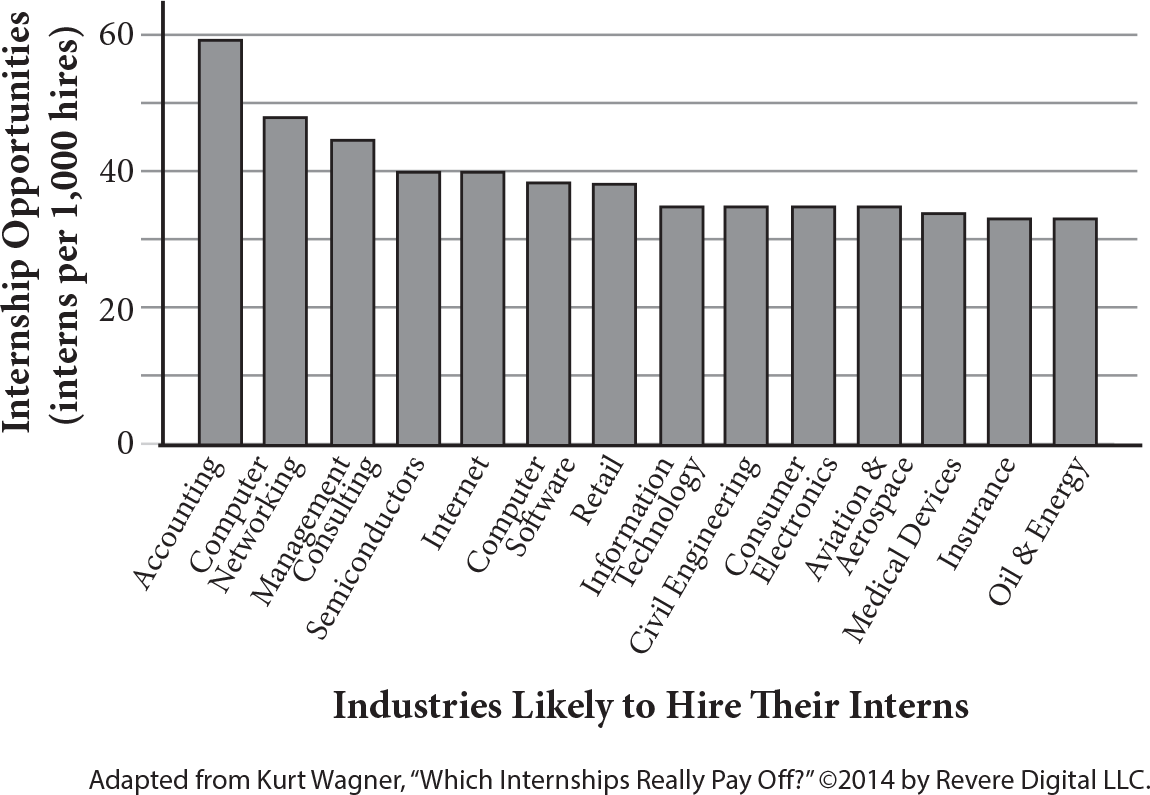
Which choice best supports the central idea of the paragraph?
Which choice provides the most appropriate introduction to the paragraph?
Which choice most accurately and effectively represents the information in the graph and the passage?
25 Minutes—20 Questions
This section corresponds to Section 3 of your answer sheet.
For this section, solve each problem and decide which is the best of the choices given. Fill in the corresponding oval on the answer sheet. You may use any available space for scratch work.
Notes:
Information:
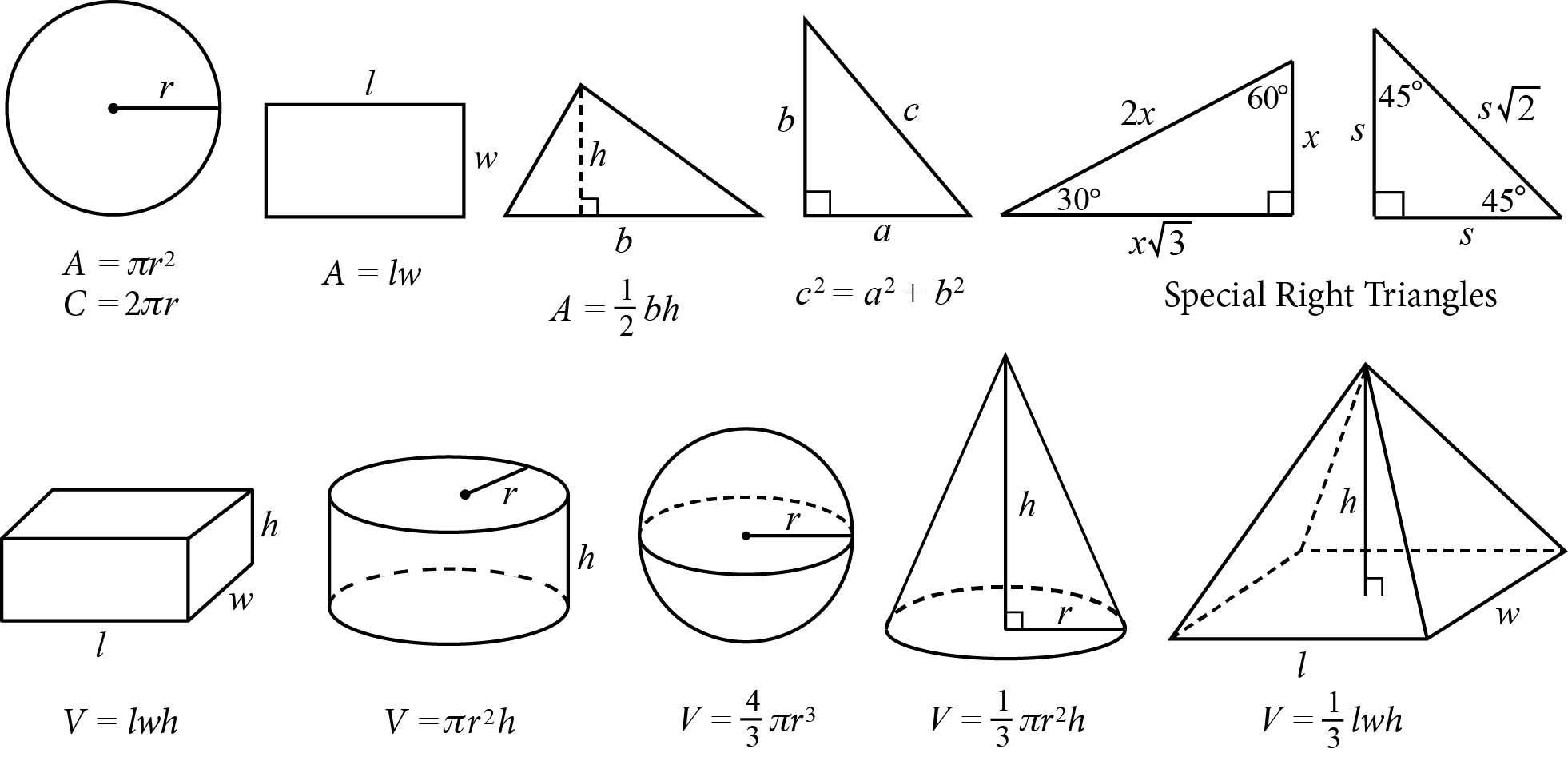
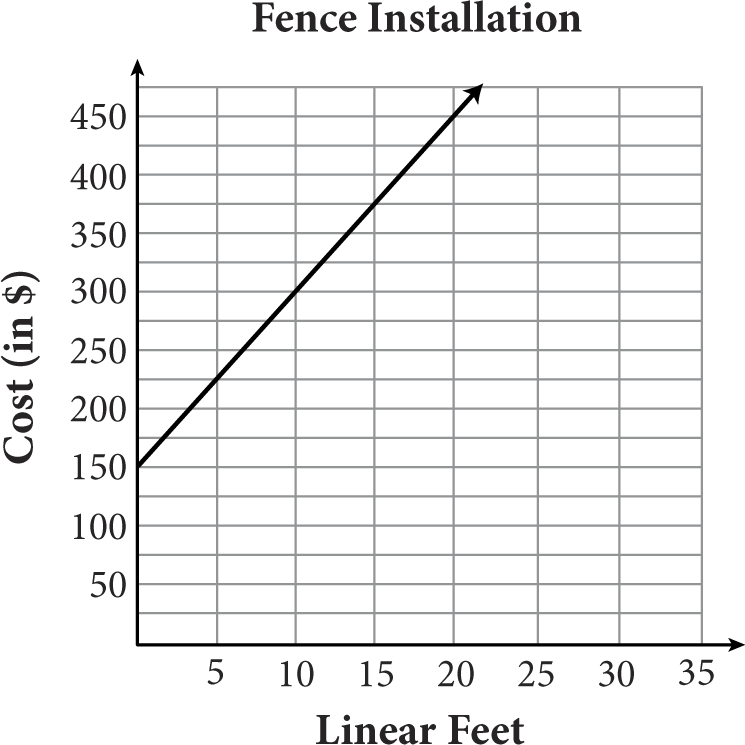
The above graph shows the cost of installing a vinyl privacy fence. The company charges a flat installation fee plus a cost per linear foot of fencing. Based on the graph, how much does one linear foot of this particular vinyl fence cost?

Which of the following expressions is equivalent to the expression shown above?
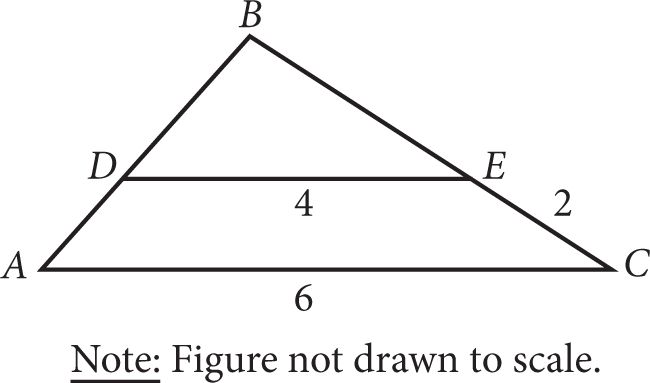
In the figure shown, ΔABC ∼ ΔDBE. What is the length of
/img/mathequationpt2/chpt_mathpt2159.png
 ?
?
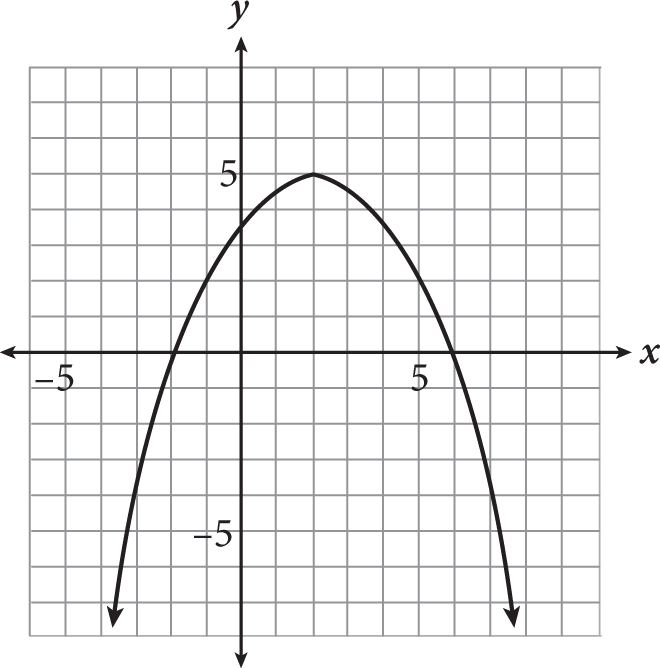
Which of the following represents the function shown above?



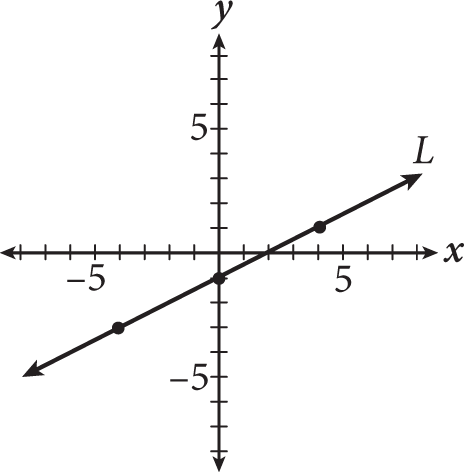
If line L shown above is reflected over the x-axis, what is the slope of the new line?


If p = 4x 3 + x − 2, q = x 2 − 1, and r = 3x − 5, then what is 2p − (q + r) ?
Which of the following are the roots of the equation 2x 2 + 4x − 3 = 0 ?




If g(x) = 3x − 5 and
/img/mathequationpt2/chpt_mathpt252.png
 , at what point does the graph of g(x) intersect the graph of h(x) ?
, at what point does the graph of g(x) intersect the graph of h(x) ?
If
/img/mathequationpt2/chpt_mathpt252.png
 , where x > 0 and k > 0, which of the following equations gives k in terms of x ?
, where x > 0 and k > 0, which of the following equations gives k in terms of x ?
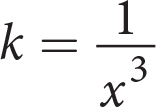
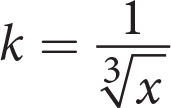

4x − (10 − 2x) = c(3x − 5)
If the equation shown above has infinitely many solutions, and c is a constant, what is the value of c ?


If
/img/mathequationpt2/chpt_mathpt252.png
 , which of the following is not a possible value of a ?
, which of the following is not a possible value of a ?

If the system of inequalities shown above has no solution, what is the value of k ?

What value(s) of x satisfy the equation above?
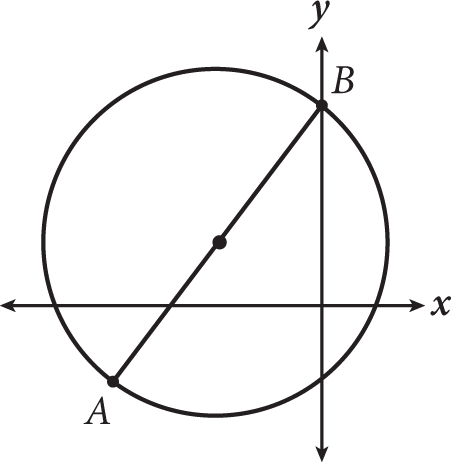
The circle shown above is given by the equation x 2 + y 2 + 6x − 4y = 12. What is the shortest distance from A to B ?

If g is a function defined over the set of all real numbers and g(x − 1) = 3x 2 + 5x − 7, then which of the following defines g(x) ?
For questions 16–20, enter your responses into the appropriate grid on your answer sheet, in accordance with the following:
 as 7.5 or 15/2.
as 7.5 or 15/2. , this response would be read as
/img/mathequationpt2/chpt_mathpt2183.png
, this response would be read as
/img/mathequationpt2/chpt_mathpt2183.png
 .)
.)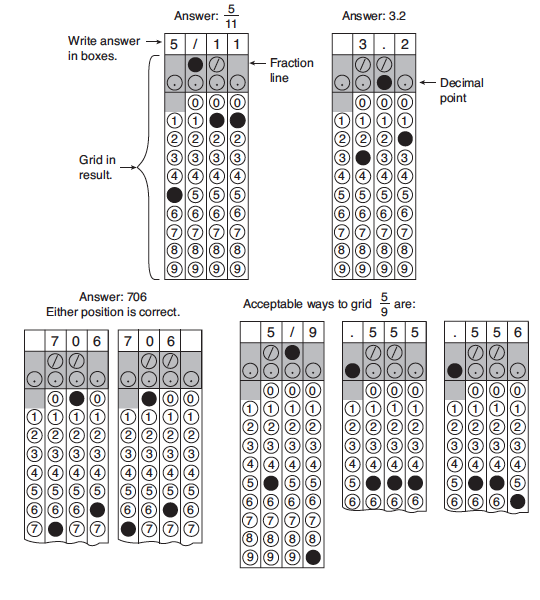

Retail businesses strive to price their products so that they sell as many as possible without losing money. Economic equilibrium is the price point at which the supply for a product is equal to the demand for that product. The graph above models this scenario. According to the graph, at what price in dollars will supply equal demand for this particular product?
Once an insect reaches its larval stage, its mass increases linearly for a short period of time and then slows down as it prepares to enter pupation. Suppose the larva of a certain species has an initial mass of 10 grams and grows linearly from t = 0 to t = 48 hours of its larval stage. If after 48 hours the mass of the larva is 14 grams, what was its mass in grams at t = 6 hours?
| x | f (x) |
|---|---|
| −1 | −2 |
| 0 | 0 |
| 1 | 2 |
| 2 | 4 |
| 3 | 6 |
| x | g(x) |
|---|---|
| −2 | 3 |
| −1 | 2 |
| 0 | 1 |
| 1 | −1 |
| 2 | −2 |
Several values for the functions f(x) and g(x) are shown in the tables above. What is the value of f(g(−1)) ?
If (4 + 3i)(1 − 2i) = a + bi, then what is the value of a ? (Note that
/img/mathequationpt2/chpt_mathpt2186.png
 .)
.)
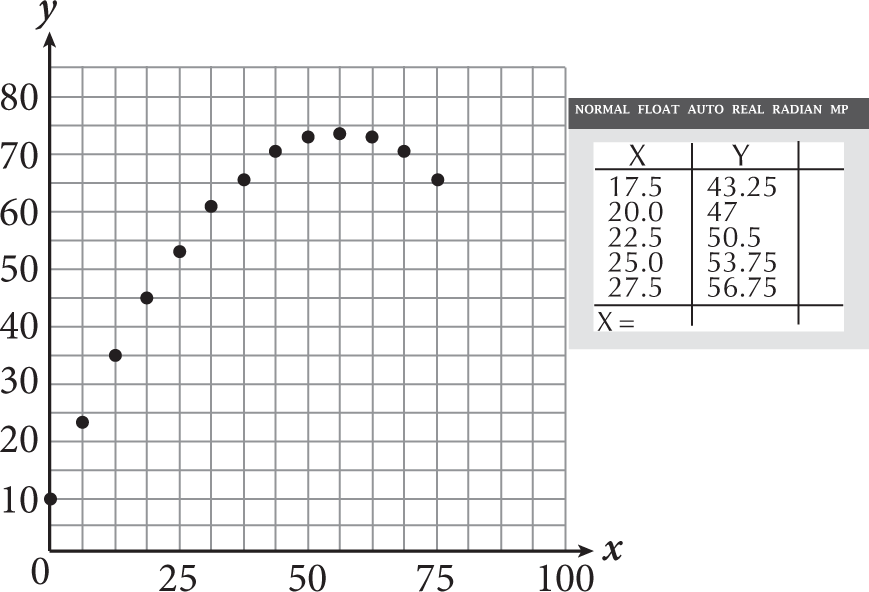
The maximum value of the data shown in the scatterplot above occurs at x = 56.25. If the data is modeled using a quadratic regression and the model is an exact fit, then what is the y-value when x = 90 ?
55 Minutes—38 Questions
This section corresponds to Section 4 of your answer sheet.
For this section, solve each problem and decide which is the best of the choices given. Fill in the corresponding oval on the answer sheet. You may use any available space for scratch work.
Notes:
Information:

The U.S. Centers for Disease Control recommends that adults engage in 2.5 hours per week of vigorous exercise. A local health society conducts a survey to see if people are meeting this goal. They ask 100 people with gym memberships how many minutes of exercise they engage in per week. After analyzing the data, the health society finds that the average respondent exercises 142 minutes per week, but the margin of error was approximately 36 minutes. The society wants to lower this margin of error. Using which of the following samples instead would do so?
As a general rule, businesses strive to maximize revenue and minimize expenses. An office supply company decides to try to cut expenses by utilizing the most cost-effective shipping method. The company determines that the cheapest option is to ship boxes of ballpoint pens and mechanical pencils with a total weight of no more than 20 pounds. If each pencil weighs 0.2 ounces and each pen weighs 0.3 ounces, which inequality represents the possible number of ballpoint pens, b, and mechanical pencils, m, the company could ship in a box and be as cost-effective as possible? (There are 16 ounces in one pound.)


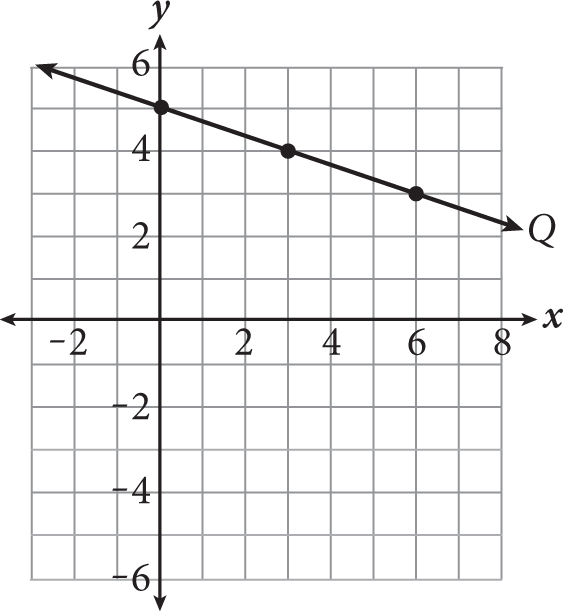
Where will line Q shown in the graph above intersect the x-axis?
The function f(x) is defined as f(x) = 2g(x), where g(x) = x + 5. What is the value of f(3) ?
A printing company uses a color laser printer that can print 18 pages per minute when printing on thick cardstock paper. One of the company’s best sellers on the Internet is business cards, which are sold in boxes of 225 cards. The cards are printed 10 per page, then cut and boxed. If a real estate company has 12 full-time agents and orders two boxes of cards per agent, how many minutes should it take to print the cards, assuming the printer runs continuously?
If 0.002 ≤ x ≤ 0.2 and 5 ≤ y ≤ 25, what is the maximum value of
/img/mathequationpt2/chpt_mathpt252.png
 ?
?
Following a study of children in the United States under three years old, the American Academy of Pediatrics stated that there is a positive correlation between the amount of time spent watching television and the likelihood of developing an attention deficit disorder. Which of the following is an appropriate conclusion to draw from this statement?

A bicyclist is training for the Liège-Bastogne-Liège, one of Europe’s oldest road bicycle races. The line graph above shows the number of miles she biked each week for eight weeks. According to the graph, what was the greatest change (in absolute value) in the weekly number of miles she biked between two consecutive weeks?
If a line that passes through the coordinates (a − 1, 2a) and (a, 6) has a slope of 5, what is the value of a ?


An occupational health organization published a study showing an increase in the number of injuries that resulted from elderly people falling in the bathtub. In response to this increase, a medical supply company decided to drop its price on bathtub lifts from $450 to $375, hoping to still break even on the lifts. The company breaks even when its total revenue (income from selling n bathtub lifts) is equal to its total cost of producing the lifts. If the cost, C, in dollars, of producing the lifts is C = 225n + 3,150, how many more of the lifts does the company need to sell at the new price to break even than at the old price?
Questions 11 and 12 refer to the following information.
A zoo is building a penguin exhibit. It will consist of an underwater area and a land area. The land area is made of thick sheets of ice. An outline of the total space covered by the ice is shown below. A pipe 2 feet in diameter runs the full length of the exhibit under the ice. A substance known as ice-cold glycol continuously runs through the pipe to keep the ice frozen.
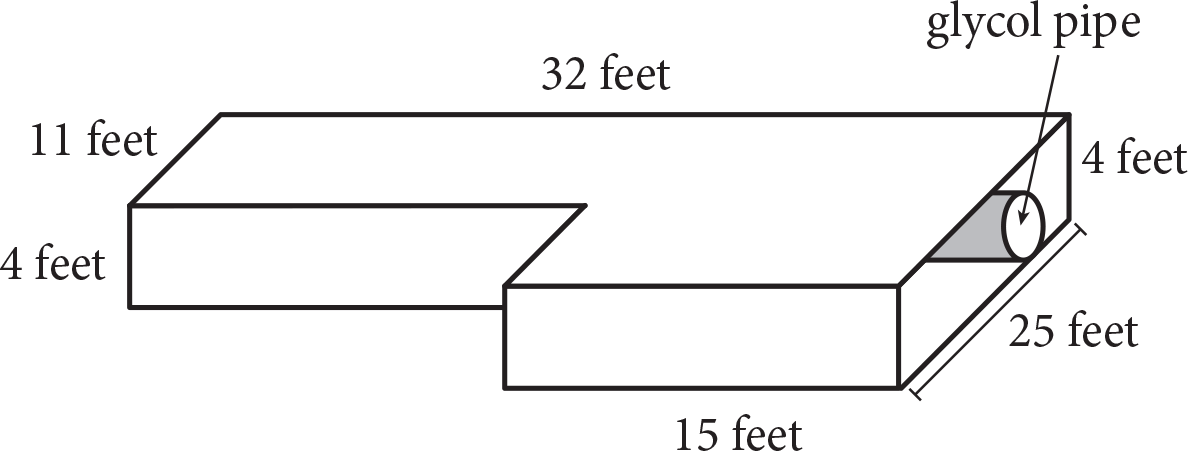
About how many cubic feet of water are needed to create the ice portion of the exhibit?
The zoo is planning to hire a company to fill the space with water. The company plans to use two 4-inch hoses that can each pump 60 gallons of water per minute. About how long should it take to fill the space? (There are 7.48 gallons of water in 1 cubic foot of ice.)
Which of the following quadratic equations has no solution?
Questions 14 and 15 refer to the following information.
Three airplanes depart from three different airports at 8:30 a.m., all traveling to Chicago O’Hare International Airport (ORD). The distances the planes must travel are recorded in the following table. (Note: Assume all times provided are in Eastern Standard Time.)
| From | Distance to Chicago |
|---|---|
| Kansas City (MCI) | 402 |
| Boston (BOS) | 864 |
| Miami (MIA) | 1,200 |
The plane traveling from Boston traveled at an average speed of 360 miles per hour. The plane traveling from Kansas City arrived at 10:34 a.m. How many minutes before the plane from Boston arrived did the plane from Kansas City arrive?
For the first
/img/mathequationpt2/chpt_mathpt252.png
 of the trip, the plane from Miami flew through heavy winds and dense cloud cover at an average speed of 200 miles per hour. For the remaining portion of the trip, the weather was ideal, and the plane flew at an average speed of 450 miles per hour. Due to a backlog of planes at ORD, it was forced to circle overhead in a holding pattern for 25 minutes before landing. At what time did the plane from Miami land in Chicago?
of the trip, the plane from Miami flew through heavy winds and dense cloud cover at an average speed of 200 miles per hour. For the remaining portion of the trip, the weather was ideal, and the plane flew at an average speed of 450 miles per hour. Due to a backlog of planes at ORD, it was forced to circle overhead in a holding pattern for 25 minutes before landing. At what time did the plane from Miami land in Chicago?
If
/img/mathequationpt2/chpt_mathpt252.png
 for all real values of t, which of the following is not in the range of h(t) ?
for all real values of t, which of the following is not in the range of h(t) ?
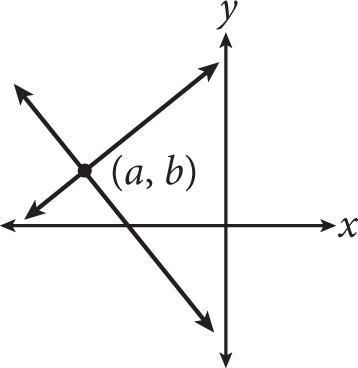
If (a, b) represents the solution to the system of equations shown in the graph and a = −3b, then which of the following could be the value of a + b ?
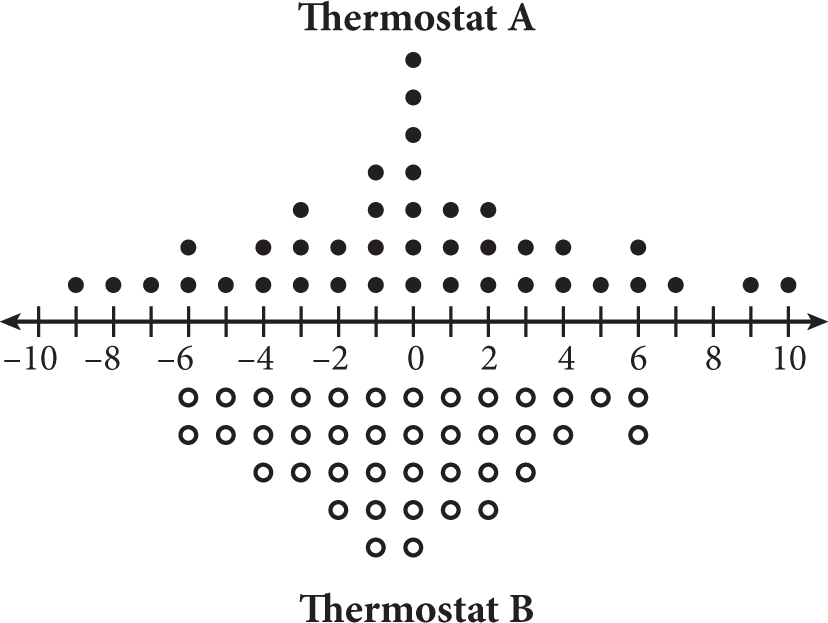
A car manufacturer tested two types of thermostats to determine which one it wanted to use in a new model of car. The more consistently the thermostat engages the engine’s cooling fan, the better the cooling system performs over the long run. The double dot plot above shows the test results, given the following conditions:
Zero indicates that the cooling fan engaged at exactly the temperature at which the thermostat was set (the target temperature).
Negative numbers indicate that the fan engaged below the target temperature.
Positive numbers indicate that the fan engaged above the target temperature.
The safe range for the fan to engage is 10 degrees above or below the target temperature.
Which of the following best states which thermostat the car manufacturer is likely to choose and why?
If p and q represent the zeros of a quadratic function and p + q = −3, which of the following could be the factored form of the function?
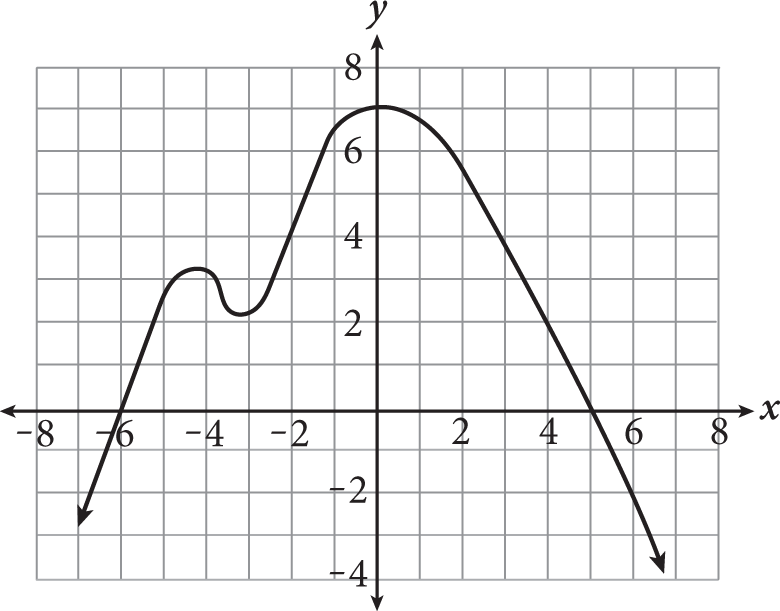
The figure above shows the graph of p(x) − 4. What is the value of p(0) ?
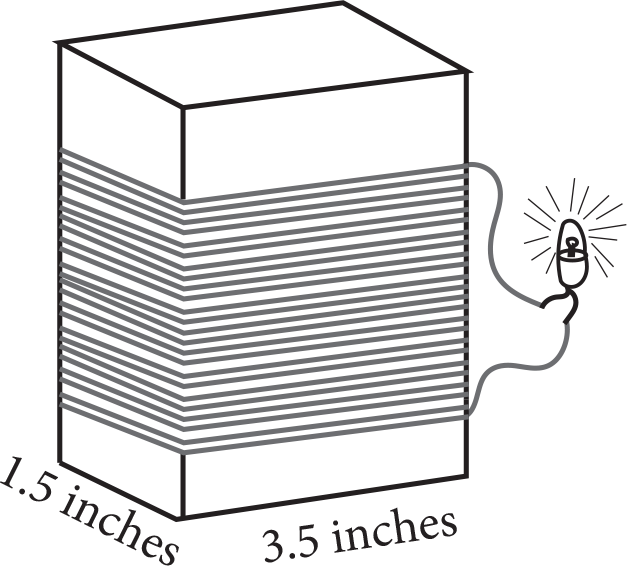
Geraldine is making a simple AC electric generator for a science project using copper wire, cardboard, a nail, and magnets. The first step in building the generator is wrapping the wire around a rectangular prism made from the cardboard and connecting it to a small light bulb, as shown in the figure. If Geraldine has 18 feet of wire and needs to leave 3 inches on each end to connect to the light bulb, how many times can she wrap the wire around the cardboard prism? (Note: 1 foot = 12 inches.)
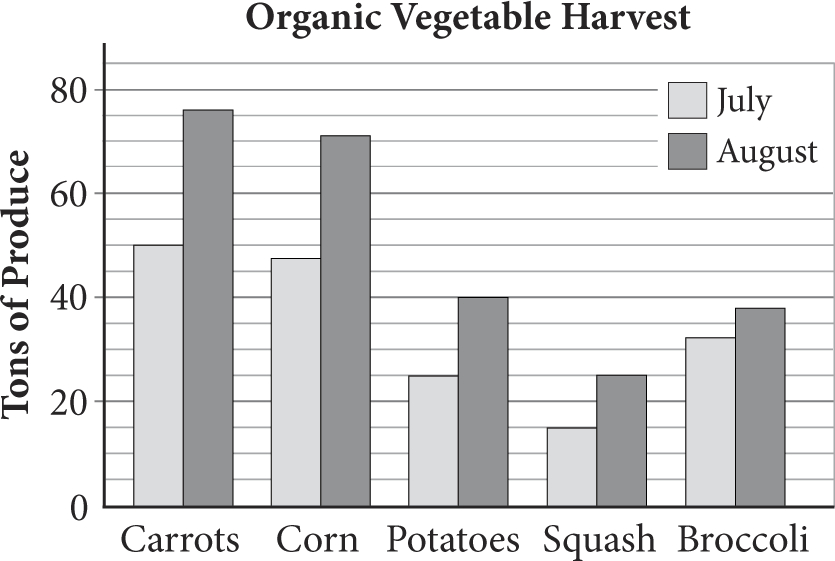
The bar graph above shows the vegetable harvest, in tons, at an organic produce farm during July and August. Of the following, which best approximates the percent increase in the harvest of squash at this farm from July to August?
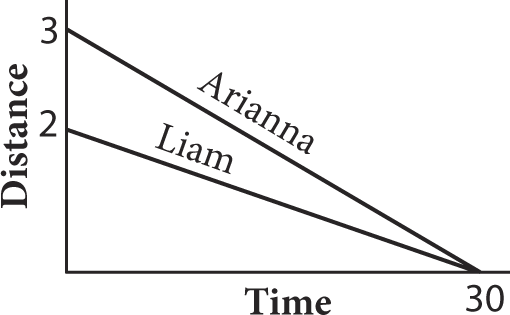
Arianna and her brother Liam both walk home from school each day, but they go to different schools. The figure shows their trip home on Monday. Based on the graph, which of the following statements is true?
If line L passes through the points (−4, −8) and (8, 1), which of the following points does line L not pass through?
| Unemployed | Employed | Totals | |
|---|---|---|---|
| Female Degree |
12 | 188 | 200 |
| Female No Degree |
44 | 156 | 200 |
| Male Degree |
23 | 177 | 200 |
| Male No Degree |
41 | 159 | 200 |
| Totals | 120 | 680 | 800 |
The table above shows the results of a sociological study identifying the number of males and females with and without college degrees who were unemployed or employed at the time of the study. If one person from the study is chosen at random, what is the probability that that person is an employed person with a college degree?




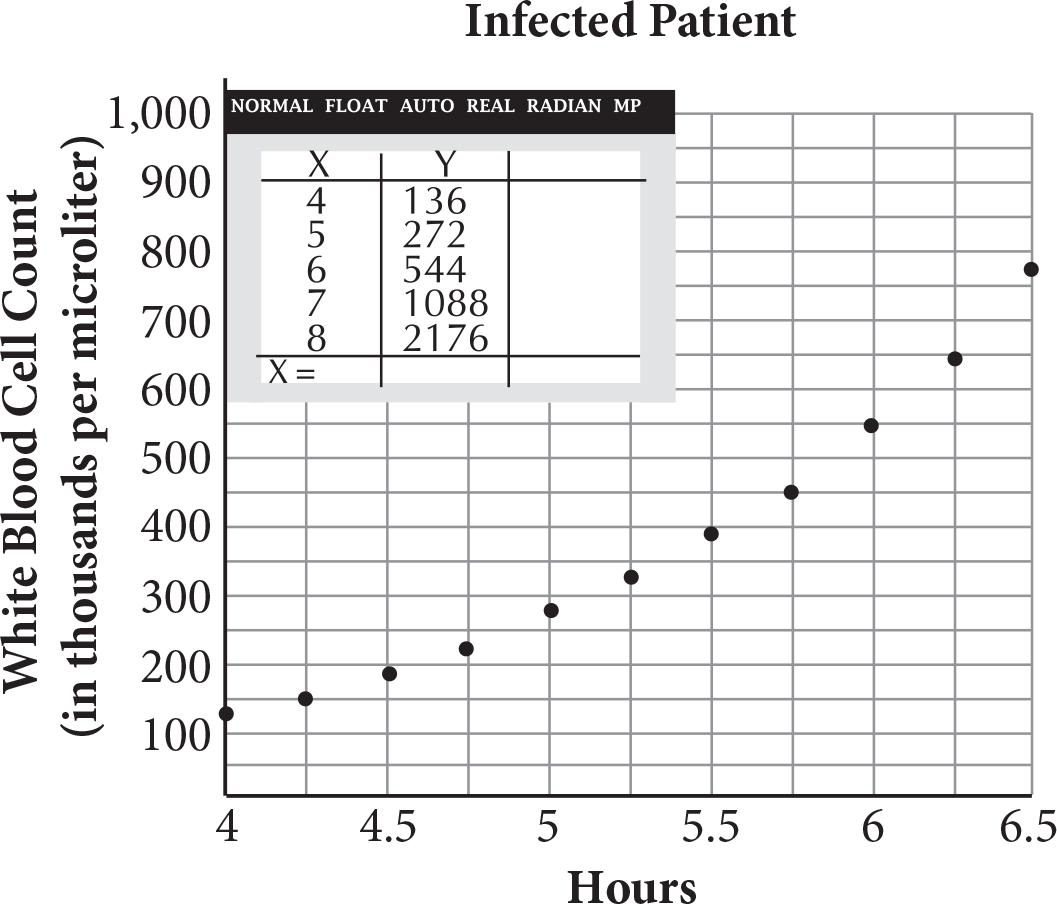
Typically, when people contract an infectious disease, their immune system immediately begins to produce extra white blood cells to fight the disease. The scatterplot shows the white blood cells reproducing in an infected patient, along with several values found when modeling the data using a graphing calculator. According to this model, how many white blood cells per microliter of blood did the patient have before he contracted the disease?
A rodeo is building a circular arena. The arena will have a total area of 64π square yards and can either be left open for rodeo competitions or divided into 12 equal sections through the center for auctions. When holding auctions, the rodeo has an average of 4 bulls and 8 horses for sale. A bull cannot be placed in a section directly beside another section containing a bull, and all edges of these sections must be reinforced with strong steel to keep the bulls from getting out. Which of the following represents how much steel in yards the rodeo will need to reinforce the 4 bull sections?


Lena bought a saltwater fish tank that holds 400 gallons of water. She started filling the tank on Friday, but then stopped after putting only 70 gallons of water in the tank. On Saturday, she bought a bigger hose and began filling the tank again. It took her 1 hour and 50 minutes on Saturday to completely fill the tank. Which equation represents the number of gallons of water in the fish tank on Saturday, given the amount of time in minutes that Lena spent filling the tank?
A self-storage company has three sizes of storage units. The ratio of small to medium units is 3:5. The ratio of medium to large units is 3:2. The company analyzes its business model and current consumer demand and determines that it can benefit from utilizing larger economies of scale. In other words, it decides to grow its business based on current economic conditions and plans to build a second, larger self-storage building. The company’s research indicates that the new market would benefit from having only two sizes of storage units, small and large, in the same ratio as its current facility. What ratio of small to large units should it use?

The equation shown above represents the following scenario: A chemical laboratory uses two air purifiers to clean the air of contaminants emitted while working with hazardous materials. One is an older model, and the other is a new model that is considerably more energy efficient. The new model can clean the air of contaminants three times as quickly as the older model. Working together, the two air purifiers can clean the air in the lab in 7 hours. Which of the following describes what the term
/img/mathequationpt2/chpt_mathpt252.png
 in the equation represents?
in the equation represents?
 of the air by itself
of the air by itselfFor questions 31–38, enter your responses into the appropriate grid on your answer sheet, in accordance with the following:
 as 7.5 or
15/2
.
as 7.5 or
15/2
. , this response would be interpreted as
/img/mathequationpt2/chpt_mathpt2227.png
, this response would be interpreted as
/img/mathequationpt2/chpt_mathpt2227.png
 .)
.)

What is the solution to the equation shown above?
If
/img/mathequationpt2/chpt_mathpt2228.png
 , what is the value of n ?
, what is the value of n ?
When a thrift store gets used furniture in good condition to sell, it researches the original price and then marks the used piece down by 40 percent of that price. On the first day of each of the following months, the price is marked down an additional 15 percent until it is sold or it reaches 30 percent of its original price. Suppose the store gets a piece of used furniture on January 15th. If the piece of furniture costs $1,848 new and it is sold on March 10th of the same year, what is the final selling price, not including tax? Round your answer to the nearest whole dollar.
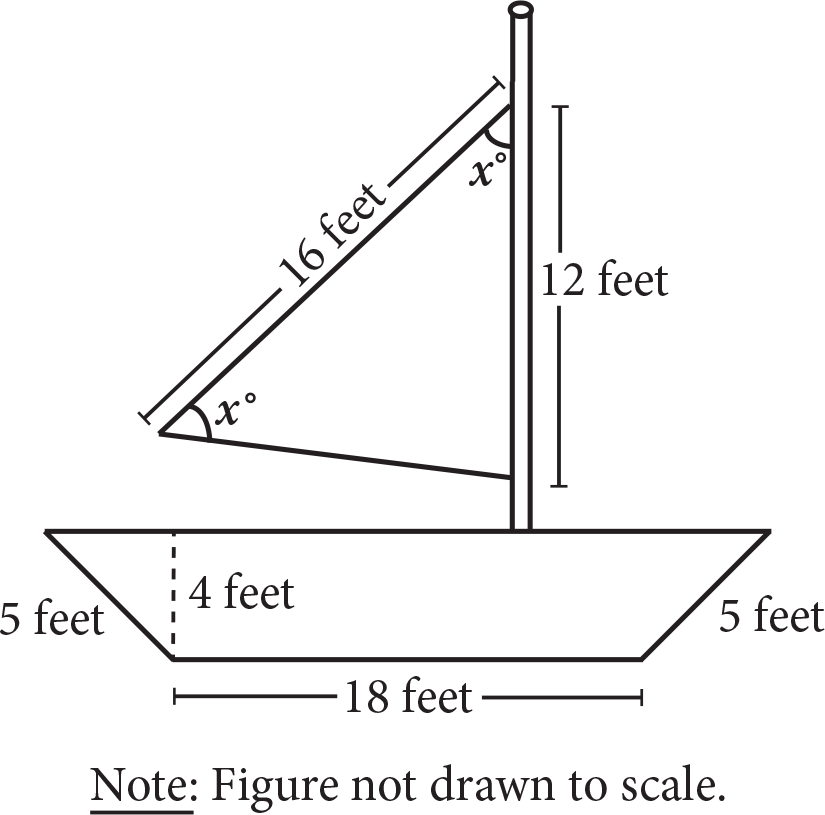
Many sailboat manufacturers sell kits that include instructions and all the materials needed to build a simple sailboat. The figure shows the finished dimensions of a sailboat from such a kit. The instructions indicate that cos x° = b, but do not give the value of b. What is the value of b ?
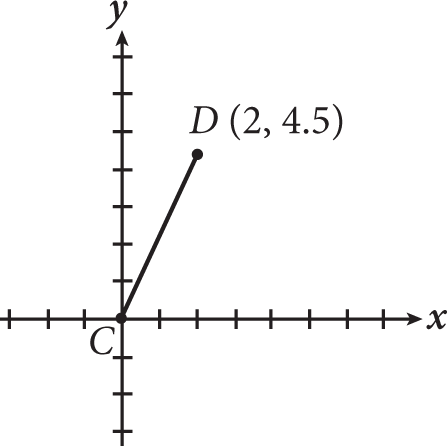
In the figure shown above, line B (not shown) is parallel to
/img/mathequationpt2/chpt_mathpt2233.png
 and passes through the point (0, –1). If line B also passes through the point (2, y), what is the value of y ?
and passes through the point (0, –1). If line B also passes through the point (2, y), what is the value of y ?
Recycling of certain metals has been a common practice dating back to preindustrial times. For example, there is evidence of scrap bronze and silver being collected and melted down for reuse in a number of European countries. Today, there are recycling companies and even curbside collection bins for recycling. As a general rule, recycling companies pay for metals by weight. Suppose a person brings in 3 pounds of copper and receives $8.64, and 24 ounces of nickel and receives $10.08. If another person brings in equal weights of copper and nickel, what fractional portion of the money would he receive from the copper? (Note: There are 16 ounces in 1 pound.)
Questions 37 and 38 refer to the following information.
Body mass index, or BMI, is one of several measures used by doctors to determine a person’s health as indicated by weight and height. Low-density lipoprotein, or LDL cholesterol, known as the “bad” cholesterol, is another health indicator and consists of fat proteins that clog arteries. Following are the results of a study showing the relationship between BMI and LDL for 12 individuals and the line of best fit for the data.

How many of the 12 people have an actual LDL that differs by 10 or more milligrams per deciliter from the LDL predicted by the line of best fit?
According to the line of best fit, what is the closest whole number BMI approximation for a person that has an estimated LDL level of 140 milligrams per deciliter?
50 Minutes
You will be given a passage to read and asked to write an essay analyzing it. As you write, be sure to show that you have read the passage closely. You will be graded on how well you have understood the passage, how clear your analysis is, and how well you express your ideas.
Your essay must be written on the lines in your answer booklet. Anything you write outside the lined space in your answer booklet will not be read by the essay graders. Be sure to write or print in such a way that it will be legible to readers not familiar with your handwriting. Additionally, be sure to address the passage directly. An off-topic essay will not be graded.
|
This passage deals with the issue of compensation for college athletes. |
|
| 1 |
In the world of college sports, there is growing debate about whether student athletes should be awarded monetary compensation for their contribution to teams that garner millions of dollars for universities. Presently, the National Collegiate Athletics Association (NCAA), the governing body of college sports, doesn’t allow it. Some hold this law as sacrosanct, saying it keeps college sports from becoming commercial and corrupting the experience of student athletes, who are in school, after all, for an education. But the reality is that we are past that point: college sports are big business, and the system that caps student salaries at zero is tantamount to wage fixing and collusion. If such practices happened in the investment market, universities would be fined by the FTC. |
| 2 |
In a labor market, they’d be shut down. Student athletes are being defrauded and taken advantage of. |
| 3 |
So how much money is at stake? Basketball and football are the two main sports in question. Every year, the month of March becomes synonymous with a weeks-long basketball bracket that winnows down 64 teams to the single best. In football, a season of stadium-filling regular season games culminates in half a dozen lucrative “bowl games” sponsored by some of the biggest corporations in the world: FedEx, AT&T, and Mobil Oil. |
| 4 |
For television networks, advertisers, universities, and local businesses where the events are held, these games are every bit as big as the NFL’s Super Bowl and the NBA playoffs. In 2011, ESPN and Fox signed television rights deals worth $3 billion to the Pacific-12 conference. Forbes magazine reported that CBS and Turner Broadcasting make more than one billion dollars off the March Madness broadcasts, “thanks in part to a $700,000 advertising rate for a 30-second spot during the Final Four.” One study put the value of a Texas A&M home game at $86 million for businesses in Brazos County, where A&M is located. |
| 5 |
The dollar figures are indeed vast, and universities get their share. Here are two examples from schools with top football teams. According to the most recent federal data, the University of Texas football team netted a profit of $77.9 million in 2011–2012. Michigan made $61.6 million from football and $85.2 million in revenue. |
| 6 |
Coaches, too, are a big part of the equation. Average salaries for major college football coaches have jumped more than 70 percent since 2006, to $1.64 million, according to USA Today. Nick Saban, head coach for Alabama, makes $7.3 million a year. |
| 7 |
And yet, players take home no money. None. How can this be? Because, like unscrupulous tycoons from a Dickens novel, college presidents, athletic directors, and conference commissioners set their players’ wages as low as they can get them—zero. |
| 8 |
According to a recent study, if college football operated under the same revenue-sharing model as the NFL, each player on the Texas A&M squad would see a paycheck of about $225,000 per year. |
| 9 |
All this talk of money might have you thinking that we should go back to square one and take the money out of college sports. But money is in college sports’ DNA. It was conceived that way. It all grew out of the Morrill Land-Grant College Act of 1862. “As large public institutions spread into sparsely populated states, the competition for students grew fierce,” says Allen Sack, a business professor at the University of New Haven. Football happened to be invented around that time, and schools took it up as a tool to draw students, and spectators, to campuses. The 1894 Harvard-Yale football game, for example, generated $119,000, according to the New York Times. That’s nearly $3 million in today’s dollars. |
| 10 |
The historic justification for not paying players is that they are amateur student-athletes, and the value of their scholarships is payment enough. But the NCAA’s own study shows that its scholarship limit leaves so-called “full” scholarship athletes with $3,000 to $5,000 in out-of-pocket expenses each year. The average shortfall is $3,200. Furthermore, most scholarships are revokable, so if an athlete doesn’t perform well on the field, or is injured, he can, in a sense, lose that compensation. A student athlete devotes 40 hours a week on average toward sport; that’s equivalent to a full-time job. Zero pay and immediate termination with no recourse? Those are labor conditions that any sensible workforce would unionize to change. But students are powerless to change. They are up against the NCAA, the Big 10 commission, university boards, and the almighty corporate dollar. Someone needs to become their advocate and get student athletes the compensation they deserve. |
Write an essay that analyzes the author’s approach in persuading her readers that possessions are oppressive. Focus on specific features, such as the ones listed in the box above the passage, and explain how these features strengthen the author’s argument. Your essay should discuss the most important rhetorical features of the passage.
Your essay should not focus on your own opinion of the author's conclusion, but rather on how the author persuades his readers.
Suggested passage map notes:
1. A
Difficulty: Easy
Category: Detail
Getting to the Answer: Eliminate answers that go against your understanding of the characters in the passage. The first paragraph explicitly states that Watson’s curiosity about Holmes “gradually deepened and increased” (lines 2–3). Choice (A) is the correct answer.
2. D
Difficulty: Medium
Category: Vocab-in-Context
Getting to the Answer: Predict a word that could be substituted for "casual" in context. Watson is explaining that Holmes’s appearance is noticeable even to someone who hasn’t seen him very often; therefore, occassional, (D) is correct.
3. D
Difficulty: Easy
Category: Inference
Getting to the Answer: The central idea in this passage should reflect the overall picture the author paints of Sherlock Holmes. The passage develops Holmes as an unusual and eccentric character. Watson marvels at Holmes’s failure to pursue a typical path for an intelligent person, for example, and describes in detail how Holmes’s behavior and knowledge deviate from the ordinary. Choice (D) is the only answer choice that is directly supported by details in the passage.
4. B
Difficulty: Medium
Category: Vocab-in-Context
Getting to the Answer: Use context clues to help you predict the meaning of the word as it is used in the sentence. In this sentence, the context clues provide a contrast to the target word. Watson says Holmes is usually “sharp” and “hawk-like” with great “alertness” except when he is in a period of "torpor" (lines 7–10). You can predict that the meaning of “torpor” will be something close to the opposite of sharp and alert. Choice (B) is the correct answer.
5. C
Difficulty: Easy
Category: Inference
Getting to the Answer: Look for clues in the passage about how and why Holmes studies and learns. Watson notes that Holmes has not studied anything “which might fit him for a degree” (lines 21–22). This suggests that his learning is not motivated by something external, like a degree, but by his personal interests. Likewise, he has a “zeal” for particular subjects (line 24). Choice (C) reflects Holmes’s motives for studying.
6. C
Difficulty: Medium
Category: Command of Evidence
Getting to the Answer: Eliminate answer choices that don’t explain why Holmes studies. A correct answer will allow you to make a logical guess as to Holmes’s motives for studying. Choice (C) provides the best evidence by illustrating that Holmes pursues topics that he is passionate about rather than studying for external motivations.
7. C
Difficulty: Medium
Category: Inference
Getting to the Answer: Closely read Holmes’s own statements for clues about his views. Holmes clearly suggests that the brain can only hold a limited amount of information, so one should prioritize the things that are most important. Therefore, (C) is the correct answer.
8. D
Difficulty: Easy
Category: Command of Evidence
Getting to the Answer: Reread each quote in the context of the passage. Find the one that supports the previous answer by giving evidence of Holmes’s own ideas about learning. Of all the answer choices, Holmes’s own statement about the necessity of prioritizing useful facts most directly supports the previous answer. Choice (D) is the correct answer.
9. A
Difficulty: Medium
Category: Function
Getting to the Answer: Consider what this figurative use of “attic” helps reveal about the character of Holmes. The author has Holmes compare the human brain to an attic to help illustrate Holmes’s beliefs about useful facts versus those not worth learning. Choice (A) is the correct answer.
10. D
Difficulty: Medium
Category: Inference
Getting to the Answer: Think about what insights the reader gains by having Watson narrate the story. The author is able to establish Holmes as an intriguing character by showing Watson’s thoughts and reactions to Holmes. Presumably, readers will want to find out more about Holmes because the narrator depicts him as a fascinating person. Choice (D) fits this situation.
Suggested passage map notes:
11. C
Difficulty: Easy
Category: Inference
Getting to the Answer: Examine the first two paragraphs. Try to paraphrase the reason Wilson gives for making the speech. In the first two paragraphs, Wilson anticipates the end of the war and alludes to the “processes of peace” (line 2). Although he refers to national sovereignty and conquest, he states that his purpose is to lay out a program for peace in the world, making (C) the correct answer.
12. D
Difficulty: Medium
Category: Command of Evidence
Getting to the Answer: Remember that the correct answer will provide information that directly relates to the answer to the previous question. The correct answer to the previous question concerns Wilson’s plan to maintain peaceful relations in the world. Lines 26–27 read, “The programme of the world’s peace, therefore, is our programme,” making (D) the correct answer.
13. A
Difficulty: Medium
Category: Vocab-in-Context
Getting to the Answer: Predict a word that could substitute for "frankly" in context. In the list of points he presents, Wilson is defining actions and policies that will promote peace and open communication among nations. In this context, "frankly" suggests honesty, which makes (A) the correct answer.
14. B
Difficulty: Medium
Category: Inference
Getting to the Answer: Eliminate answer choices that cannot be inferred by the information provided in the passage. Calling for an end to "private international understandings" is one of Wilson's 14 points (lines 29–30). Therefore, it can be inferred that in the past, certain nations did indeed form "secret covenants" (line 6), or pacts, with one another. Choice (B) is correct.
15. A
Difficulty: Medium
Category: Command of Evidence
Getting to the Answer: The correct answer will reference a detail that provides evidence for the answer to the previous question. In the first paragraph of his speech, Wilson refers to “secret understandings” (line 4) that cannot exist anymore if there is to be peace among nations. Therefore, (A) is correct.
16. C
Difficulty: Medium
Category: Vocab-in-Context
Getting to the Answer: Pretend the word is a blank in the sentence. Next, predict what word could be substituted for the blank. The sentence states that “national armaments will be reduced to the lowest point consistent with domestic safety” (lines 43–44). In this sense, Wilson aims to assure nations that they will still be able to protect themselves. Predict that armaments will be reduced to an extent agreeable with maintaining their own safety. (C) is the correct choice.
17. D
Difficulty: Hard
Category: Inference
Getting to the Answer: Though the question is asking you about a specific line, it makes sense to choose an answer that is compatible with the broader context of the passage. In the excerpted line, Wilson identifies the “adjustment of all colonial claims” (line 46) as an item in his program for world peace. If his goal is to safeguard world peace, this must mean he believes conflicts resulting from colonization, itself an imperial pursuit, must be addressed. Choice (D) is correct.
18. C
Difficulty: Hard
Category: Inference
Getting to the Answer: Locate the three points to which the question refers. Do not confuse them with other numbered points in the speech. Points VI through VIII refer to territorial sovereignty, evacuation of occupied lands, and restoration of lands. These points align with the claim that nations have violated one another’s territorial sovereignty through invasion and occupation. This makes (C) the correct answer.
19. B
Difficulty: Hard
Category: Inference
Getting to the Answer: Be sure that the answer you choose reflects the ideology and positions expressed by Wilson in his speech. In the passage, Wilson expresses that he is in favor of international cooperation to promote and sustain global peace. Choice (B) is the correct answer because it describes an approach to international relations that is analogous to Wilson’s.
20. B
Difficulty: Medium
Category: Global
Getting to the Answer: When asked a question involving the structure of a passage, consider the text as a whole. Often, the structure is visually noticeable. Wilson begins by stating his argument that countries must work together toward peace. He then follows up with specific examples (the 14 points) of how his ideas should be carried out. Choice (B) is the correct answer.
Suggested passage map notes:
Passage 1
Passage 2
21. B
Difficulty: Medium
Category: Global
Getting to the Answer: Focus on the big picture rather than supporting details. Choice (B) correctly identifies the central idea in the passage. Choice (A) is a detail found in paragraph 1; (C) is not actually stated in the passage; and (D) distorts information mentioned in paragraphs 3 and 4.
22. D
Difficulty: Hard
Category: Inference
Getting to the Answer: Keep the central idea of the passage in mind as you look for information in the passage about each of the choices. Determine which one can be inferred as true. The last two paragraphs of Passage 1 discuss “health benefits” of meditation (line 30), studies showing positive results of meditation, and a quote from a professional about meditation's advantages. This matches choice (D).
23. D
Difficulty: Medium
Category: Command of Evidence
Getting to the Answer: Avoid choices that do not provide direct evidence to support your answer to the previous question. Choice (D) supports the inference that some medical professionals accept meditation as beneficial.
24. C
Difficulty: Easy
Category: Vocab-in-Context
Getting to the Answer: Predict a word that could substitute for "compelling" in context. The context of the sentence suggests that meditation has great or convincing benefits, which is another way of saying "persuasive." Therefore, (C) is correct.
25. C
Difficulty: Easy
Category: Inference
Getting to the Answer: Remember that you’re analyzing the author’s point of view on meditation, not Tim Ryan’s view. Since the author makes statements such as calling Ryan a “voice for calm consideration” (line 55), the author must hold a positive view of meditation. However, there is little evidence that the author is devoted to meditation. Choice (C) correctly reflects the author’s point of view.
26. A
Difficulty: Easy
Category: Inference
Getting to the Answer: Determine what can be inferred about Ryan’s personality from what is stated in the passage. The passage contains numerous examples of Ryan putting his belief in the value of mindfulness into action. For instance, he hosts meditation sessions for his staff and supports legislation promoting meditation. Choice (A) is the correct answer.
27. C
Difficulty: Medium
Category: Command of Evidence
Getting to the Answer: Be careful of choices that do not provide direct evidence to support the inference about Ryan from the previous question. Choice (C) is correct. Mr. Ryan shows that he acts on what he believes by supporting legislation that encourages meditation, such as the bill supporting the increase in holistic medicine offered by the Department of Veterans Affairs.
28. A
Difficulty: Easy
Category: Vocab-in-Context
Getting to the Answer: Predict a word that is a synonym for "secular" in context. In the context of the sentence, “but rather” indicates that “secular” means the opposite of “religious,” which would be “nonreligious,” so (A) is the correct answer.
29. D
Difficulty: Easy
Category: Inference
Getting to the Answer: Reread the sentence to determine what connotative meaning the author suggests through the use of “chatter.” Since “chatter” in this sentence is contrasted with the “mind and body” syncing together, the word has a negative connotation that suggests background noise or frequent talk. Only (D) fits with this meaning.
30. B
Difficulty: Medium
Category: Inference
Getting to the Answer: Look for an answer that fits with the purposes of both passages. Avoid choices that are suggested by only one of the passages. Both passages discuss changing attitudes regarding the efficacy of mindfulness meditation: Passage 1 states it is becoming “more popular” (lines 16–17) and “widely accepted by health professionals” (line 45), while Passage 2 describes the impact of a politician who is promoting meditation. Only (B) reflects this.
31. A
Difficulty: Medium
Category: Inference
Getting to the Answer: Examine the graphic and the two passages to figure out which answer choice is supported by all three. The passages both discussed benefits of meditation. The graphic shows that workers were more productive and had fewer injuries after being in a meditation program. Choice (A) is the only one that relates to the information in the graphic.
Suggested passage map notes:
32. D
Difficulty: Hard
Category: Global
Getting to the Answer: Think of what the author wants the reader to learn about bees. This will help you figure out the passage’s purpose. Choice (D) is the primary purpose of the passage. The author most wants the reader to know about colony collapse disorder.
33. A
Difficulty: Hard
Category: Inference
Getting to the Answer: Think back to the author’s purpose that you explored in question 32. Consider what this purpose suggests about the author’s point of view. The author seems knowledgeable about honeybees and very concerned about their loss. The author points out the many losses humans would have if honey bees were to disappear. Therefore, (A) is the correct answer.
34. B
Difficulty: Hard
Category: Function
Getting to the Answer: Notice that the word “mysteriously” appears toward the beginning of the passage, when the author is first introducing the topic. As the author introduces the topic of colony collapse disorder in the first paragraph, the word “mysterious” helps emphasize how puzzling the disorder truly is. Choice (B) is the correct answer.
35. D
Difficulty: Medium
Category: Vocab-in-Context
Getting to the Answer: Predict a word that is a synonym for “plights” in context. In the sentence, “common plights” refers to pests such as mites, fungus, and bacteria, which farmers commonly see in beehives. Predict a negative word. In this context, (D), “troubles,” is the correct answer.
36. C
Difficulty: Hard
Category: Function
Getting to the Answer: Examine the part of the passage that discusses the lack of bees after a collapse. The author wants to stress the fact that research has shown that pathogens are not the reason for colony collapse. Choice (C) is the correct answer.
37. C
Difficulty: Medium
Category: Command of Evidence
Getting to the Answer: Be careful of choices that do not directly support your answer to the previous question. In the context of its paragraph, lines 31–33 provide evidence to support the inference that the cause of colony collapse is not pathogens, since “common killers” such as pathogens would leave “telltale signs.” Choice (C) is the correct answer.
38. D
Difficulty: Easy
Category: Vocab-in-Context
Getting to the Answer: Predict a word that could substitute for “foraging” in context. Predict an action that bees might perform during their “pollination flights,” such as searching for flowers. The context of the sentence rules out all but (D), the correct answer.
39. A
Difficulty: Hard
Category: Inference
Getting to the Answer: Review your passage map and use the passage's central idea as a general prediction. Choice (A) is correct. Though the author laments the disappearance of honey bees and says how challenging it is to solve the problem, the last paragraph ends the passage on a cautiously optimistic note, particularly with the use of the word “hopefully” (line 82).
40. D
Difficulty: Medium
Category: Command of Evidence
Getting to the Answer: Be careful of choices that might support an incorrect answer in the previous question. Choice (D) is evidence that the author is cautiously optimistic about the future of the honeybee.
41. B
Difficulty: Medium
Category: Detail
Getting to the Answer: Watch out for answer choices that might sound plausible but are not explicitly stated in the passage. Choice (B) is correct; the last paragraph states that some towns and cities are relaxing their regulations about beekeeping “in response to the honeybee population crisis” (line 81).
42. A
Difficulty: Medium
Category: Inference
Getting to the Answer: Look for information in the passage that tells what honey bees and human beings do for each other. Paragraph 1 states that if honey bees disappear, people will not have certain foods; even the beef industry will be affected. Therefore, humans depend on the honey bees to keep the environment and economy healthy. Choice (A) is correct.
Suggested passage map notes:
43. C
Difficulty: Medium
Category: Global
Getting to the Answer: Think about the idea that is developed throughout the passage. Avoid answers that refer only to supporting details. Choice (C) is the correct answer because all the information in the passage relates to the dangers posed by space debris created by humans.
44. B
Difficulty: Medium
Category: Command of Evidence
Getting to the Answer: Look at each quote from the passage and decide which most clearly supports the central idea. In paragraph 3, the author describes how space debris created by humans is dangerous to spacecraft and the people inside of them. Choice (B) is the correct answer.
45. C
Difficulty: Medium
Category: Function
Getting to the Answer: Consider the central idea that you identified in question 43. Identify the central idea of paragraph 2. The passage is mostly about the dangers associated with human-made space debris. Paragraph 2 contains details about the types of human-made space debris orbiting Earth, thus providing support for the central idea. Choice (C) is the correct answer.
46. A
Difficulty: Medium
Category: Detail
Getting to the Answer: Reread the information about meteoroids at the beginning of the passage. Think about how this compares with the descriptions of space debris in the following paragraphs. The author states that although there were concerns about meteoroids in the early days of space travel, scientists concluded that the risk was small because meteoroids were rare. The author goes on to explain that space debris created by humans is a greater concern because it is so plentiful. Choice (A) is the correct answer.
47. C
Difficulty: Hard
Category: Inference
Getting to the Answer: The author’s central claim in the passage is that space debris left by humans is dangerous. Think about which of the answer choices most directly supports that claim. In paragraph 6, the author describes how Skylab fell to Earth. This example strengthens the claim, illustrating that the debris left in space can be dangerous even on Earth. Therefore, (C) is the correct answer.
48. D
Difficulty: Medium
Category: Vocab-in-Context
Getting to the Answer: Eliminate answers that are synonyms for “obsolete” but do not make sense in context. Since it was debris that fell out of space, Skylab was no longer in use. In this context, “obsolete” means “outdated,” so (D) is the correct answer.
49. A
Difficulty: Hard
Category: Inference
Getting to the Answer: Eliminate answer choices that cannot be supported with information found in the passage. In paragraph 6, the author describes how space debris can be dangerous on Earth if a large enough piece gets through the atmosphere without burning up. It is logical, then, that (A) is the correct answer; warnings could help people avoid areas where impacts are predicted, thereby decreasing the chance of injury. The author explicitly states that agencies monitor debris to make predictions and issue warnings (lines 58–62).
50. D
Difficulty: Medium
Category: Command of Evidence
Getting to the Answer: Avoid answer choices that provide evidence for incorrect answers to the previous question. Choice (D) is the correct answer, because in lines 60–62, the author states that there is nothing to be done about space debris falling to Earth except to issue warnings.
51. A
Difficulty: Medium
Category: Vocab-in-Context
Getting to the Answer: Predict a word that is a synonym for "implemented" in context. Since the debris will remain in space unless a method of removal is “implemented,” predict the word that means employed. In this context, (A) is the correct answer.
52. B
Difficulty: Hard
Category: Inference
Getting to the Answer: Make sure you understand the units and labels in the graphic before choosing an answer. The graphic shows that the highest density of space debris occurs at an altitude just under 800 kilometers, posing the greatest risk of the dangers discussed in the passage. It is reasonable to conclude, therefore, that if NASA were to place a new satellite into orbit, the agency should choose to avoid the altitude range of 700–900 kilometers. Choice (B) is the correct answer.
1. B
Difficulty: Medium
Category: Sentence Structure: The Basics
Getting to the Answer: Determine the noun to which the modifier in this sentence is referring. Then, check the noun’s placement to make sure it is as close as possible to the modifier. The modifier is “like most chemists.” Therefore, the noun it modifies should be a person. Choice (B) correctly rearranges the sentence so that “chemists” clearly refers to “Constantin Fahlberg.”
2. D
Difficulty: Medium
Category: Development: Introductions and Conclusions
Getting to the Answer: This is the topic sentence of the paragraph. Make sure that it focuses on the correct subject. The purpose of this sentence is to discuss Fahlberg and the circumstances in which he was working. Choice (D) correctly focuses the sentence on Fahlberg and flows well into the next sentence, which discusses the specifics of coal tar.
3. B
Difficulty: Easy
Category: Agreement: Pronouns
Getting to the Answer: The pronoun should agree with the noun to which it refers. Identify this noun to determine the correct pronoun. The antecedent of the pronoun here is “coal tar,” a singular, impersonal noun. Choice (B), “from it,” is therefore the correct answer.
4. C
Difficulty: Easy
Category: Development: Precision
Getting to the Answer: Predict what meaning the correct word should convey before choosing an answer. The sentence suggests that while working, Fahlberg was so “___” that he forgot to eat lunch. A word that means focused on or preoccupied with would be most appropriate. Choice (C), “engrossed,” conveys this meaning successfully.
5. D
Difficulty: Hard
Category: Organization: Transitions
Getting to the Answer: The passage is telling a story. Choose the answer that most effectively makes the transition between the paragraphs while maintaining a consistent tone with the rest of the story. The correct answer will relate to the sentences both before and after it. While answer (B) may intrigue readers, its tone is out of place when compared with that of the rest of the passage. Choice (D) is the correct answer. It provides a transition from the previous sentence and tells the next logical step in the story.
6. D
Difficulty: Hard
Category: Development: Relevance
Getting to the Answer: The correct answer will clearly present the central idea of the paragraph. Identify the answer choice that presents the most important point about the scene being described. To be effective as a central idea, the sentence needs to sum up the supporting details in the paragraph and convey their meaning. Only (D) both explains what happened and describes why it was significant, which is the central idea of the paragraph.
7. B
Difficulty: Hard
Category: Agreement: Verbs
Getting to the Answer: Examine the context of the sentence. Notice that it’s describing a potentially disastrous outcome if conditions had been different. Fortunately, he had not worked with anything poisonous or corrosive or the story would have had a different ending. If Fahlberg had been working with poisonous or corrosive materials, there is no doubt that “the story” would have had a different—and terrible—ending. The word “might” is too conditional for this situation; therefore, (B), which includes the word “would,” is the correct answer.
8. A
Difficulty: Hard
Category: Development: Introductions and Conclusions
Getting to the Answer: Determine which option clearly states the most important information in this paragraph. The most important fact in this paragraph is that Fahlberg discovered a new substance accidentally. The rest of this paragraph provides details about this discovery. Therefore, the correct answer choice will state that Fahlberg made a discovery. Choice (A) makes this idea clear.
9. D
Difficulty: Easy
Category: Development: Precision
Getting to the Answer: Look for clues in the rest of the sentence to determine which verb fits with the exact meaning of the sentence. The sentence states that Fahlberg is making the saccharin “commercially,” or as part of a business. Choice (D), “producing,” is correct, as it emphasizes the business nature of his work.
10. C
Difficulty: Medium
Category: Organization: Sentence Placement
Getting to the Answer: Try each answer choice. What information seems confusing when not presented in the correct order? Logically, Fahlberg should find the mixture of chemicals and work to isolate it before he names it and understands its significance. Therefore, (C) is the most logical place for sentence 4 and is the correct answer.
11. B
Difficulty: Hard
Category: Organization: Introductions and Conclusions
Getting to the Answer: Specifically state in your own words what the passage is about. Then, read the answer choices to see what fits best. The passage focuses on the specific moment of Fahlberg’s discovery, including the significance of the discovery itself and its applications. Only (B) convincingly ties the sentence to the main ideas of the passage.
12. B
Difficulty: Easy
Category: Agreement: Pronouns
Getting to the Answer: A modifier should match its antecedent in number and gender. Also, be wary of words that sound alike but have different meanings and uses. As it stands, the sentence incorrectly uses the adverb “there.” Since it refers to “great philosophers,” the correct word is the possessive pronoun “their,” which is often confused with “there.” Choice (B) is the correct answer.
13. D
Difficulty: Hard
Category: Development: Precision
Getting to the Answer: Read carefully to identify the context of the underlined word. Then, choose the word that best fits the context of the sentence. The underlined word modifies “premodern sources of truth and knowledge,” which in turn refers to “political and religious tradition and authority.” The context of the sentence indicates that these were powerful ideas that were being challenged by newer ideas. Choice (D), “reigning,” conveys the idea that “political and religious tradition and authority” had monarch-like, or ruling, levels of power in people’s lives.
14. B
Difficulty: Easy
Category: Organization: Transitions
Getting to the Answer: Determine the relationship between the two parts of the underlined sentence, and then think about which answer choice best conveys this relationship. The sentence states that “foundations of truth seemed to be crumbling” and “Descartes’s writings proposed an alternative foundation.” The two ideas are connected to each other: Descartes’s writings were a response to this “crumbling.” Choice (B) is the answer that identifies this relationship.
15. C
Difficulty: Hard
Category: Agreement: Modifiers
Getting to the Answer: Determine whether the modifying phrase in this sentence references the correct noun. If the modifier in this sentence is describing a person, then the noun that is described by the modifier should also be a person. Choice (C) correctly matches the modifier (beginning with “an expert”) to the noun “Descartes,” rather than the noun “work.”
16. A
Difficulty: Hard
Category: Development: Relevance
Getting to the Answer: Determine the central claim in the paragraph and then come back to the question. The central claim of the paragraph is that Descartes’s work established the foundation for many modern ideas. The statement found in (A) provides information that best supports this claim and logically transitions to the following sentence. Choice (A) is correct.
17. B
Difficulty: Medium
Category: Development: Introductions and Conclusions
Getting to the Answer: In your own words, identify what idea ties together the ideas presented in the rest of the paragraph. Sentence 1 states that “modern culture would come to cherish this.” The question is, what is “this”? The rest of the paragraph goes into detail about Descartes’s philosophical methods. Choice (B) identifies Descartes’s general philosophical focus and is, therefore, the correct answer.
18. D
Difficulty: Medium
Category: Sentence Structure: The Basics
Getting to the Answer: Identify whether the sentence consists of two independent clauses or an independent and a dependent clause. This will provide guidance for punctuating it. The sentence consists of two independent clauses (“Descartes arrived . . .” and “he could only be . . .”). Separating the independent clauses into two sentences is the best way to punctuate them. Choice (D) is the correct answer.
19. B
Difficulty: Hard
Category: Development: Relevance
Getting to the Answer: Look for the answer choice that most clearly helps to develop the ideas in the surrounding sentences. The inserted sentence comes after a discussion of Descartes’s only certainty—that he was thinking. The sentence that follows it explains that from this, he could build additional knowledge. The correct answer will develop the idea of certainty and how it can be used to acquire more knowledge. Choice (B) best conveys this information and therefore is the correct choice.
20. D
Difficulty: Medium
Category: Agreement: Verbs
Getting to the Answer: A grammatically correct sentence will include a verb whose form makes the sentence an independent clause. “Propelled by” needs the addition of an auxiliary verb for this sentence to stand alone. Inserting “were” before this phrase makes the sentence grammatically complete. Choice (D) is the correct answer.
21. B
Difficulty: Medium
Category: Agreement: Verbs
Getting to the Answer: Determine whether there is a way to make the sentence less wordy without changing its intended meaning. The sentence, especially in the context of the paragraph, seems to be saying that it’s difficult to determine exactly what Descartes did versus what other people at the time did. Both answer choices (C) and (D) change the meaning of the sentence slightly to say either that Descartes himself could not be separated from his contemporaries or that what they did was identical. Choice (B) is correct because it eliminates the wordiness of the sentence while maintaining its meaning.
22. C
Difficulty: Medium
Category: Development: Precision
Getting to the Answer: Determine what role this verb has in the sentence. What is the precise nature of the action it is describing? The sentence is about how Descartes’s work brought about shifts in thinking that critically influenced other developments. However, the word “begun,” (A), does not precisely convey the power with which this occurred. Choice (C), “initiated,” conveys this meaning and is the correct answer.
23. C
Difficulty: Medium
Category: Development: Precision
Getting to the Answer: Reread the surrounding sentences to look for context clues. Then, review the answer choices, paying attention to the meaning and nuance of each word. The passage states that art is constantly evolving and changing. The correct answer will represent the opposite of this meaning. The word “static” means that something does not change, so (C) is the correct answer.
24. B
Difficulty: Medium
Category: Sentence Structure: Commas, Dashes, and Colons
Getting to the Answer: Read the sentence and determine whether the parts of the sentence on either side of the semicolon are independent clauses. If they are not, identify their function and choose the appropriate punctuation. “For better or worse” is not an independent clause; rather, it is a parenthetical element that adds an opinion to the main thrust of the sentence. Choice (B) is correct. It uses a dash to set off this additional information in the sentence.
25. B
Difficulty: Medium
Category: Development: Introductions and Conclusions
Getting to the Answer: To determine the main topic of a paragraph, identify important details and then summarize them in a sentence or two. Find a choice that matches your prediction. Avoid choices like (A) and (C), which include details about poetry that are not in the paragraph. The details in this paragraph are about how the writers of the past viewed the novel as a vital way to record and comment on the human experience. Choice (B) captures this main topic.
26. A
Difficulty: Medium
Category: Development: Precision
Getting to the Answer: Read the surrounding sentences to get a sense of what the underlined word is meant to convey. Then, review the answer choices to find the one that is closest to this meaning. The passage suggests that the novel was held in high regard. The correct answer needs to indicate high regard with a positive connotation. The word “loftily,” (A), connotes both high regard and a positive view of the novel as a literary form.
27. A
Difficulty: Medium
Category: Development: Relevance
Getting to the Answer: Look for the answer choice that improves the sentence by adding important, relevant information. The paragraph is about the opinions of acclaimed novelists. Choice (A) adds the information that Joseph Conrad was also a novelist.
28. A
Difficulty: Medium
Category: Sentence Structure: Commas, Dashes, and Colons
Getting to the Answer: Identify the role of the underlined phrase; then, use this information to determine the necessary punctuation. “However” is an introductory adverbial element that modifies the rest of the sentence. It should be followed by a comma. Choice (A) is correct.
29. B
Difficulty: Medium
Category: Agreement: Modifiers
Getting to the Answer: Check the placement of dependent clauses set off by commas. A dependent clause that modifies a noun in a sentence should be adjacent to or as close as possible to the noun it is modifying. The dependent clause “which are now available on digital devices” modifies “novels,” not “entertainment medium.” It should be as close as possible to “novels,” making (B) the correct answer.
30. A
Difficulty: Medium
Category: Sentence Structure: The Basics
Getting to the Answer: A compound sentence should be combined with a semicolon or a comma with a conjunction. Choice (A) is correct. This keeps the semicolon, which appropriately separates two related independent clauses.
31. C
Difficulty: Hard
Category: Development: Relevance
Getting to the Answer: Evaluate the paragraph for the central idea. Next, review the answer choices to find the one that directly supports that idea. This paragraph discusses the change from novels that tackle serious social issues to books that are meant as light entertainment for mass consumption. Choice (C) is correct. It emphasizes that readers want novels to be “fun,” providing a means of escape from their lives.
32. D
Difficulty: Medium
Category: Agreement: Pronouns
Getting to the Answer: A pronoun needs to match its antecedent. Locate the antecedent of the pronoun and then predict an answer. The correct answer will match the antecedent in gender and number. The antecedent is “novelist,” so the answer must be singular. Choice (D) is correct, as it matches the antecedent in number and appropriately identifies both gender options, since the antecedent did not specify gender.
33. A
Difficulty: Hard
Category: Sentence Structure: Commas, Dashes, and Colons
Getting to the Answer: Remember that dashes and parentheses act in similar ways. If the phrase is offering additional information before you get back to the main thrust of the sentence, then a dash is appropriate. A dash is an appropriate way to punctuate the phrase, so (A) is the correct choice.
34. B
Difficulty: Easy
Category: Development: Precision
Getting to the Answer: Read the entire paragraph to understand the context in which the underlined word appears. Be careful to distinguish between commonly confused words. The paragraph makes it clear that Kelli has started working at BP as a summer intern. The correct answer will convey this meaning. Choice (A), “excepted,” meaning “excluded from a group,” is a word that is commonly confused with “accepted,” which means “to have taken or received something.” In this case, Kelli has taken the job offer with BP, making (B) the correct choice.
35. C
Difficulty: Medium
Category: Development: Precision
Getting to the Answer: Read the entire sentence to determine the context of the underlined word. The context implies that the tasks assigned to interns are low level and meaningless. Choices (B), “skilled,” and (D), “challenging,” suggest that the tasks are important, which does not match the context. Only (C) fits the tone and context of the paragraph and is more precise than “boring.”
36. A
Difficulty: Hard
Category: Development: Relevance
Getting to the Answer: Identify the central idea and then review the answer choices to find the one that best supports it. The paragraph is about the importance of gaining a real-world perspective on classroom knowledge. Choice (A) supports this central idea by showing how Kelli’s internship will allow her to apply her classroom knowledge to the real world.
37. D
Difficulty: Hard
Category: Development: Introductions and Conclusions
Getting to the Answer: Skim the paragraph to determine what content the sentences have in common. The paragraph discusses the safety training Kelli is required to complete and explains how this training will offer her an advantage over other job applicants. Choice (D) most effectively establishes the main topic of the paragraph; it introduces the type of certification Kelli will earn.
38. A
Difficulty: Medium
Category: Development: Precision
Getting to the Answer: Analyze the sentence to determine which phrase best fits the context. Choice (A) is the correct answer. “Stand out” means that Kelli will clearly be noticed when compared with other applicants.
39. D
Difficulty: Medium
Category: Agreement: Pronouns
Getting to the Answer: Examine the structure of the sentence and identify the pronoun or pronouns that match the antecedent. Use the word “everyone” in a simple sentence to determine if it’s singular or plural: for example, “Everyone goes.” “Everyone” is a singular pronoun referring to a person, so it requires a singular possessive pronoun. Using the plural “their” is accepted only in informal usage. Choice (D) is the correct answer because it correctly matches the antecedent in number and appropriately identifies both gender options, since the antecedent did not specify a gender.
40. A
Difficulty: Medium
Category: Sentence Structure: Commas, Dashes, and Colons
Getting to the Answer: Determine the need for punctuation within the sentence. “For” and “from” are both prepositions, a clue that both phrases are correctly set off with commas. Because both phrases are dependent on the remainder of the sentence, they are correctly connected with commas. Choice (A) is correct.
41. B
Difficulty: Easy
Category: Agreement: Verbs
Getting to the Answer: In a sentence with a series of actions, make sure all verbs or verb forms are parallel. Focusing on the action verbs, it becomes clear that they should all end in “-ing.” Inconsistencies in this pattern result in a lack of parallel structure. Choice (B) is correct, as it uses the gerund form (nouns formed by adding “-ing” to verbs) of all four action verbs.
42. D
Difficulty: Medium
Category: Sentence Structure: The Basics
Getting to the Answer: Identify the subject and predicate of each sentence to determine if it is a complete sentence or a fragment. As the sentences are written in (A), the first one is an incomplete sentence, or fragment. Only (D) correctly and concisely combines the two to eliminate the fragment.
43. C
Difficulty: Medium
Category: Organization: Conciseness
Getting to the Answer: Often, when a sentence is long, it’s a good idea to see if there are ways to edit out certain words or phrases to make the sentence more concise. Choice (C) is correct. By leaving out the phrase “though she is losing her summer,” this answer choice conveys the intended meaning of the sentence with logical and concise language.
44. B
Difficulty: Medium
Category: Graphs
Getting to the Answer: Make sure you understand the information conveyed by the graphic’s labels before you attempt to choose the correct answer. The passage informs you that Kelli’s chosen field is oil and energy, represented by the bar on the far right of the graphic. Choice (B) is the correct answer as it matches the number of oil and energy interns per 1,000 hires noted on the y-axis.
1. B
Difficulty: Easy
Category: Heart of Algebra/Linear Equations
Getting to the Answer: In a real-world scenario, the slope of a line represents a unit rate and the y-intercept represents a flat fee or a starting amount. The cost of one linear foot is the same as the unit rate (the cost per linear foot), which is represented by the slope of the line. Use the grid lines and the axis labels to count the rise and the run from the y-intercept of the line (0, 150) to the next point that hits an intersection of two grid lines. Pay careful attention to how the grid lines are marked (by 5s on the x-axis and by 25s on the y-axis). The line rises 75 units and runs 5 units, so the slope is
/img/mathequationpt2/chpt_mathpt2157.png
 dollars per linear foot of fence, which is (B). Note that you could also use the slope formula and two points from the graph to find the unit rate.
dollars per linear foot of fence, which is (B). Note that you could also use the slope formula and two points from the graph to find the unit rate.
2. C
Difficulty: Easy
Category: Passport to Advanced Math/Rational Expressions
Getting to the Answer: Don’t be tempted—you can’t simply cancel one term when a polynomial is divided by a monomial. Instead, find the GCF of both the numerator and the denominator. Factor out the greatest common factor from the numerator and from the denominator, and then you can cancel it. The greatest common factor is 12x 2. Here is the math:
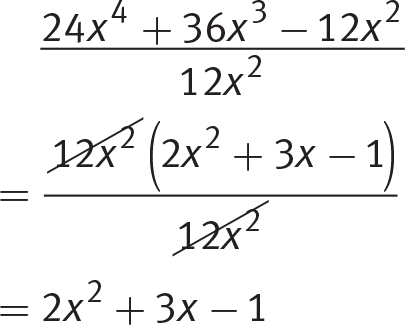
This matches (C).
3. C
Difficulty: Easy
Category: Additional Topics in Math/Geometry
Getting to the Answer: Corresponding sides of similar triangles are proportional, so write a proportion (paying careful attention to the order of the sides) using the sides that you know and the side that you’re looking for. Then, solve the proportion for the missing side.
Call the missing side x. Write a proportion using words first, and then fill in the lengths of the sides that you know:

The length of
/img/mathequationpt2/chpt_mathpt252.png
 is 4, so (C) is correct.
is 4, so (C) is correct.
4. A
Difficulty: Easy
Category: Passport to Advanced Math/Quadratics
Getting to the Answer: Recognizing the different forms of a quadratic equation can save valuable time on test day. Each of the answer choices is given in vertex form, so start by matching the vertex of the parabola in the graph to the correct equation.
When a quadratic equation is written in vertex form, y = a(x – h)2 + k, the vertex is (h, k). The vertex of the parabola in the graph is (2, 5); therefore, the equation should look like y = a(x – 2)2 + 5. This means you can eliminate (B) and (C). To choose between (A) and (D), consider the value of a. The parabola in the graph opens downward, so a must be negative. This means (A) is correct.
5. B
Difficulty: Medium
Category: Heart of Algebra/Linear Equations
Getting to the Answer: You can approach this question conceptually or concretely. Drawing a quick sketch is most likely the safest approach. Line L shown in the graph rises from left to right, so it has a positive slope. Once reflected over the x-axis, it will fall from left to right, so the new line will have a negative slope. This means you can eliminate (C) and (D). Now, draw a quick sketch like the one below of the reflected line on the coordinate plane in your test booklet and count the rise (or fall) and the run from one point to the next:

The reflected line falls 2 units and runs 4 units, so the slope is
/img/mathequationpt2/chpt_mathpt2165.png
 , which reduces to
/img/mathequationpt2/chpt_mathpt2166.png
, which reduces to
/img/mathequationpt2/chpt_mathpt2166.png
 . Thus, (B) is the correct choice.
. Thus, (B) is the correct choice.
6. B
Difficulty: Medium
Category: Passport to Advanced Math/Polynomials
Getting to the Answer: To answer this question, you need to combine like terms, being careful to distribute negative signs where appropriate. Break the calculation into steps: find 2p, find q + r, and then subtract the results. Arranging the terms in descending order will help keep them organized:
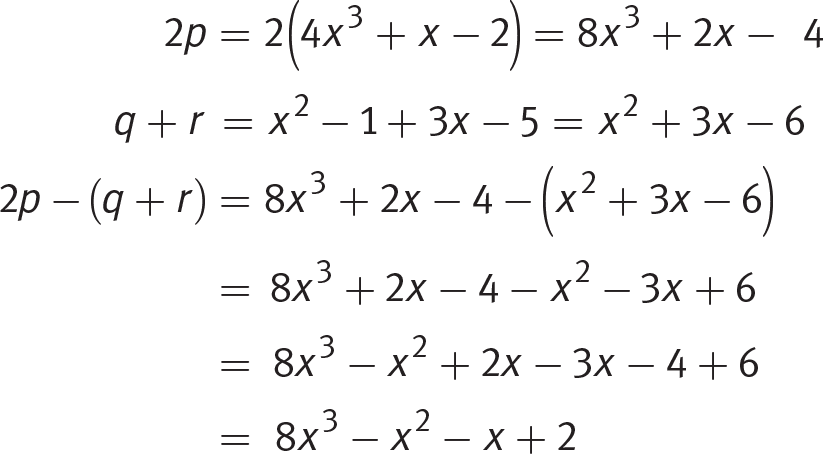
This matches (B).
7. A
Difficulty: Medium
Category: Passport to Advanced Math/Quadratics
Getting to the Answer: The roots of an equation are the same as its solutions. The answer choices contain radicals, which tells you that the equation can’t be factored. Instead, either complete the square or solve the equation using the quadratic formula, whichever you are most comfortable using. The equation is already written in the form y = ax2 + bx + c and the coefficients are fairly small, so using the quadratic formula is probably the quickest method. Jot down the values that you’ll need: a = 2, b = 4, and c = –3. Then, substitute these values into the quadratic formula and simplify:
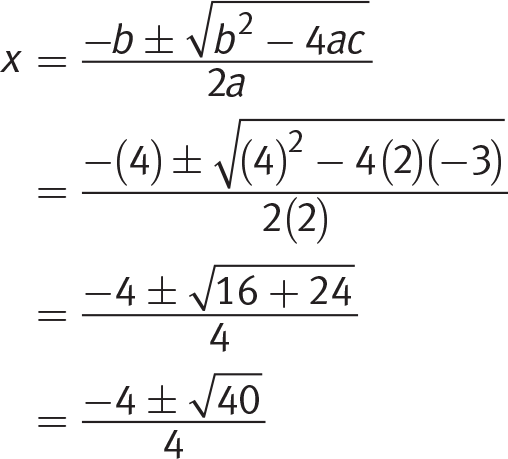
This is not one of the answer choices, so simplify the radical. To do this, look for a perfect square that divides into 40 and take its square root:

Be careful—you can’t simplify the answer any further because you cannot divide the square root of 10 by 2, so (A) is correct.
8. D
Difficulty: Medium
Category: Heart of Algebra/Systems of Linear Equations
Getting to the Answer: Although this question asks where the graphs of the functions intersect, it is not necessary to actually graph them. Two graphs intersect at the point where they have the same x-value and the same y-value. The notations g(x) and h(x) can both be interpreted as “the y-value at a given value of x,” so set g(x) equal to h(x) and solve for x. Then, if needed, plug this value into either function to find the corresponding y-value. Don’t let the fraction intimidate you—you can write g(x) as a fraction over 1 and use cross-multiplication:
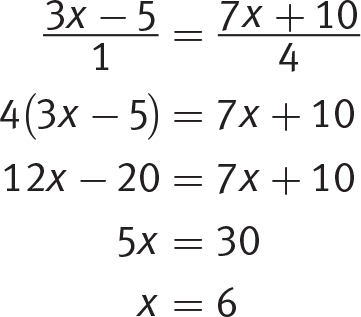
There is only one answer choice for which the x-coordinate is 6, (D), so the graphs of the functions will intersect at (6, 13).
9. A
Difficulty: Medium
Category: Passport to Advanced Math/Exponents
Getting to the Answer: When you write an equation in terms of a specific variable, you are simply solving the equation for that variable. In this question, you’ll need to relate fractional exponents to radicals and understand how to use negative exponents. Be careful—you’re not just rewriting the equation, you’re solving it for k.
Raising a quantity to the one-third power is the same as taking its cube root. Applying a negative exponent to a quantity is the same as writing its reciprocal. Rewrite the equation using these properties and then solve for k using inverse operations. Note that the inverse of taking a cube root of a quantity is cubing the quantity:
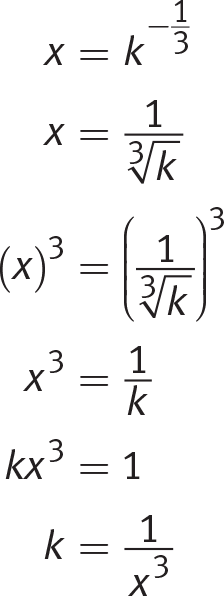
Choice (A) is correct.
10. D
Difficulty: Medium
Category: Heart of Algebra/Linear Equations
Getting to the Answer: There are two variables and only one equation, so you can’t actually solve the equation for c. Instead, recall that an equation has infinitely many solutions when the left side is identical to the right side. When this happens, everything cancels out and you get the equation 0 = 0, which is always true.
Start by simplifying the left side of the equation. Don’t forget to distribute the negative sign to both terms inside the parentheses:
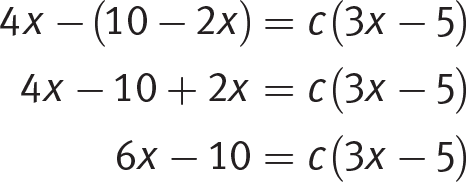
Next, quickly compare the left side of the equation to the right side. Rather than distributing the c, notice that if c were 2, then both sides of the equation would equal 6x − 10, and it would have infinitely many solutions. Therefore, c is 2, which is (D).
11. D
Difficulty: Medium
Category: Heart of Algebra/Inequalities
Getting to the Answer: You don’t need to separate this compound inequality into pieces. Just remember, whatever you do to one piece, you must do to all three pieces. Don’t forget to flip the inequality symbols if you multiply or divide by a negative number. Here, the fractions make it look more complicated than it really is, so start by clearing the fractions by multiplying everything by the least common denominator, 6:
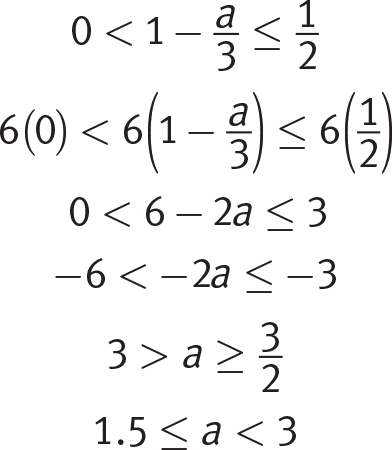
Now, read the inequality symbols carefully. The value of a is between 1.5 and 3, including 1.5, but not including 3, so (D) is the correct answer.
12. D
Difficulty: Hard
Category: Heart of Algebra/Inequalities
Getting to the Answer: The only way a system of inequalities can have no solution is if the graph consists of two parallel lines with shading in opposite directions so that there is no overlap.
Start by writing each equation in slope-intercept form to help you envision what the graphs will look like. You’ll need to multiply the second equation by –2, so don’t forget to flip the inequality symbol:


Now, think about the graphs. The first equation has a slope of  a y-intercept of 0, and is shaded below the line. The second equation also has a slope of
/img/mathequationpt2/chpt_mathpt252.png
a y-intercept of 0, and is shaded below the line. The second equation also has a slope of
/img/mathequationpt2/chpt_mathpt252.png
 , but it has a y-intercept of 2 and is shaded above the line. This means that no matter what value of k is used (other than 0), the two lines are parallel and shaded in opposite directions, and thus there are infinitely many values of k that result in a system with no solution, (D).
, but it has a y-intercept of 2 and is shaded above the line. This means that no matter what value of k is used (other than 0), the two lines are parallel and shaded in opposite directions, and thus there are infinitely many values of k that result in a system with no solution, (D).
13. C
Difficulty: Hard
Category: Passport to Advanced Math/Exponents
Getting to the Answer: When solving a rational equation, start by getting a common denominator. Then, you can set the numerators equal and solve for the variable. Don’t forget, however: if the answer produces zero in any denominator, then it is not a valid answer. The denominators are almost the same already; you just need to multiply the top and bottom of the first term by 2, factor the denominator of the second term, and you’ll be ready to solve the equation:
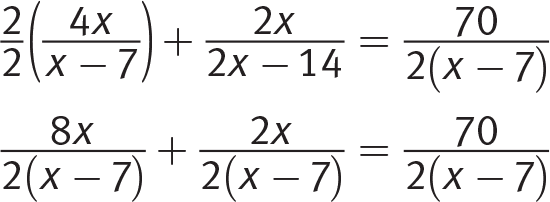
Now that the denominators are all the same, you can solve the equation represented by the numerators:
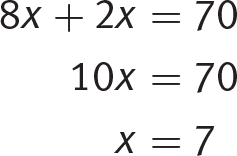
Be careful—this isn’t the correct answer. Because there are variables in the denominator, you must check the solution to make sure it isn’t extraneous, or in other words, doesn’t cause a zero in the denominator of any term. Here, if x = 7, then all of the denominators are zero (and division by zero is not possible), so the equation has no solution, (C).
14. B
Difficulty: Hard
Category: Additional Topics in Math/Geometry
Getting to the Answer: The shortest distance from A to B is through the center of the circle, along the diameter, which is twice the radius. When the equation of a circle is written in the form (x – h)2 + (y – k)2 = r 2, you can easily find the center and the radius of the circle. To find r, complete the square for the x terms and for the y terms. Start by reordering the terms. Then, take the coefficient of the x term and divide it by 2, square it, and add the result to the two terms with x variables. Do the same with the y term. Remember, you must also add these amounts to the other side of the equation. This creates a perfect square of x terms and y terms, and the equation will look more like a circle:
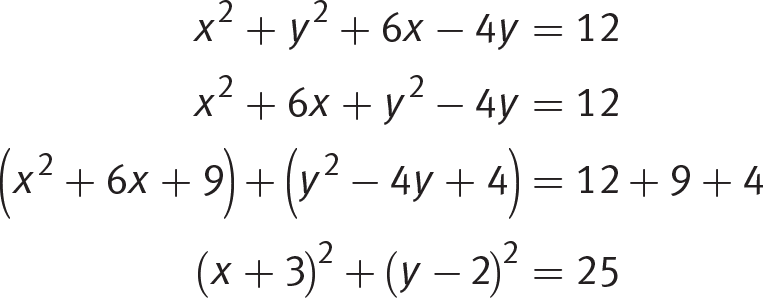
This means that the radius of the circle is
/img/mathequationpt2/chpt_mathpt2181.png
 , so the diameter is 10, which is also the distance from A to B, making (B) correct. Note that you can do a quick check of your work by looking at the center; according to the equation, the center is (–3, 2), which appears to match the location of the center on the graph.
, so the diameter is 10, which is also the distance from A to B, making (B) correct. Note that you can do a quick check of your work by looking at the center; according to the equation, the center is (–3, 2), which appears to match the location of the center on the graph.
15. C
Difficulty: Hard
Category: Passport to Advanced Math/Functions
Getting to the Answer: The key to answering this question is in having a conceptual understanding of function notation. Here, the input (x – 1) has already been substituted and simplified in the given function. Your job is to determine what the function would have looked like had x been the input.
To keep things organized, let u = x – 1, the old input. This means x = u + 1. Substitute this into g and simplify:
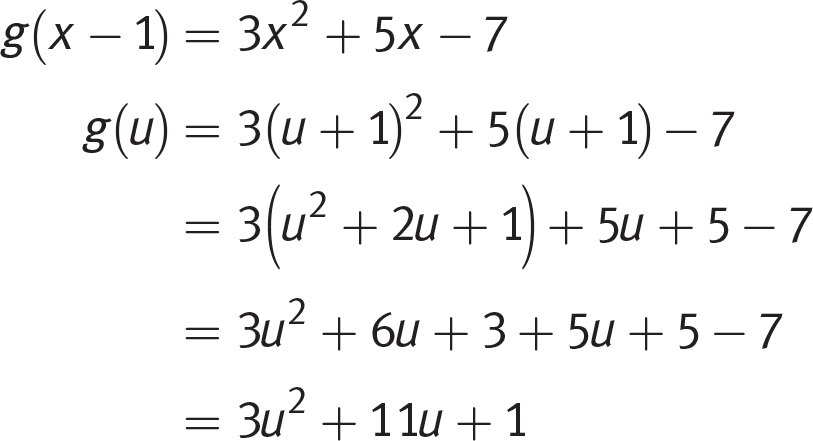
This means g(u) = 3u2 + 11u + 1. When working with function notation, you evaluate the function by substituting a given input value for the variable in the parentheses. Here, if the input value is x, then g(x) = 3x 2 + 11x + 1, which matches (C).
16. 15
Difficulty: Easy
Category: Heart of Algebra/Systems of Linear Equations
Getting to the Answer: The equilibrium price occurs when the supply and demand are equal. Graphically, this means where the two lines intersect. The lines intersect at the point (6, 15). You can see from the axis labels that price is plotted along the y-axis, so the equilibrium price is $15.
17. 10.5 or 21/2
Difficulty: Medium
Category: Heart of Algebra/Linear Equations
Getting to the Answer: The key word in this question is linear. In a real-world scenario that involves a constant rate of change, you almost always need to find the slope and the initial amount so you can write an equation. The question states that the initial mass of the larva was 10 grams, so all you need to do is find the slope.
Write the information given in the question as ordered pairs (time, mass) so you can find the slope. At t = 0, the larva has a mass of 10 grams, so one pair is (0, 10). After 48 hours, the larva has a mass of 14 grams, so a second pair is (48, 14). Now, use the slope formula:
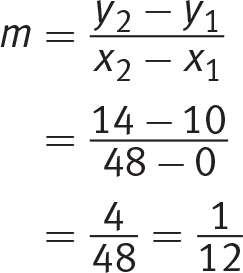
The equation is
/img/mathequationpt2/chpt_mathpt252.png
 , where y represents the mass of the larva after x hours. Substitute 6 for x to find the mass after 6 hours:
/img/mathequationpt2/chpt_mathpt2185.png
, where y represents the mass of the larva after x hours. Substitute 6 for x to find the mass after 6 hours:
/img/mathequationpt2/chpt_mathpt2185.png
 grams.
grams.
18. 4
Difficulty: Medium
Category: Passport to Advanced Math/Functions
Getting to the Answer: The notation f(g(x)) indicates a composition of two functions, which is read “f of g of x.” It means that the output when x is substituted in g(x) becomes the input for f(x). Use the second table to find that g(–1) is 2. This is your new input. Now, use the first table to find f(2), which is 4.
19. 10
Difficulty: Medium
Category: Additional Topics in Math/Imaginary Numbers
Getting to the Answer: Multiply the two complex numbers just as you would two binomials (using FOIL). Then, combine like terms. The question tells you that
/img/mathequationpt2/chpt_mathpt2187.png
 . If you square both sides of the equation, this is the same as i 2 = –1, which is a more useful fact. Now, solve:
. If you square both sides of the equation, this is the same as i 2 = –1, which is a more useful fact. Now, solve:
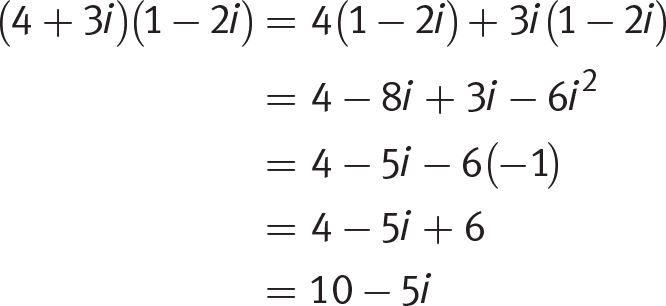
The question asks for a in a + bi, so the correct answer is 10.
20. 50.5
Difficulty: Hard
Category: Passport to Advanced Math/Scatterplots
Getting to the Answer: This question requires a conceptual understanding of modeling data and properties of quadratic functions. Because the regression model fits the data exactly, you can use what you know about quadratic functions to answer the question.
The graph of a quadratic function is symmetric with respect to its axis of symmetry. The axis of symmetry occurs at the x-value of the vertex, which also happens to be where the maximum (or minimum) of the function occurs. The question tells you this value—it’s x = 56.25. Because x = 90 is 33.75 (because 90 – 56.25 = 33.75) units to the right of the axis of symmetry, you know that the y-value will be the same as the point that is 33.75 units to the left of the axis of symmetry. This occurs at x = 56.25 – 33.75 = 22.5. Read the y-value from the graphing calculator screenshot to find the answer, which is 50.5.
1. D
Difficulty: Easy
Category: Problem Solving and Data Analysis/Statistics and Probability
Getting to the Answer: To reduce the margin of error, the society should use a larger sample size selected from a better representation of the population. The target population is all adults, not just those that have gym memberships. Using only adults with gym memberships is likely to skew the results because these respondents probably exercise considerably more than people who do not have gym memberships. This means (D) is correct.
2. B
Difficulty: Easy
Category: Heart of Algebra/Inequalities
Getting to the Answer: Think about this question conceptually. If the box cannot weigh more than 20 pounds (or 20 × 16 ounces), this means it can weigh that much or less, so the right half of the inequality you are looking for is ≤ 20 × 16. This means you can eliminate (A) and (C) based on the inequality symbol. A box is made up of ballpoint pens, b, and mechanical pencils, m. Each pen weighs 0.3 ounces, and each pencil weighs 0.2 ounces. The total weight of the box would be the number of pens, b, multiplied by their weight, 0.3, added to the number of pencils, m, multiplied by their weight, 0.2. So the inequality is 0.3b + 0.2m ≤ 20 × 16, which matches (B).
3. C
Difficulty: Easy
Category: Heart of Algebra/Linear Equations
Getting to the Answer: Finding an x-intercept is easy when you know the equation of the line—it’s the value of x when y is 0. Everything you need to write the equation is shown on the graph. The y-intercept is 5 and the line falls 1 unit and runs 3 units from one point to the next, so the slope is
/img/mathequationpt2/chpt_mathpt2190.png
 . This means the equation of the line, in slope-intercept form, is
/img/mathequationpt2/chpt_mathpt2191.png
. This means the equation of the line, in slope-intercept form, is
/img/mathequationpt2/chpt_mathpt2191.png
 . Now, set the equation equal to zero and solve for x:
. Now, set the equation equal to zero and solve for x:
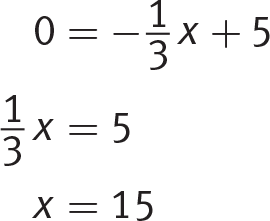
Line Q will intercept the x-axis at 15, which is (C).
4. D
Difficulty: Easy
Category: Passport to Advanced Math/Functions
Getting to the Answer: When you see an expression such as f(x), it means to substitute the given value for x in the function’s equation. When there is more than one function involved, pay careful attention to which function should be evaluated first. You are looking for the value of f(x) at x = 3. Because f(x) is defined in terms of g(x), evaluate g(3) first by substituting 3 for x in the expression x + 5:

Choice (D) is correct.
5. C
Difficulty: Easy
Category: Problem Solving and Data Analysis/Rates, Ratios, Proportions, and Percentages
Getting to the Answer: Pay careful attention to the units. As you read the question, decide how and when you will need to convert units. In this problem, work backward—you need to know how many pages of cards will be printed. To find this number, you first need to know how many cards will be printed. So, start with the number of agents (which tells you the number of boxes) and multiply by the number of cards per box:

Next, use the information about pages to finish the calculations:

This means (C) is correct.
6. A
Difficulty: Medium
Category: Heart of Algebra/Inequalities
Getting to the Answer: The question is asking about
/img/mathequationpt2/chpt_mathpt2195.png
 , so think about how fractions work. Larger numerators result in larger values
/img/mathequationpt2/chpt_mathpt2196.png
(
, so think about how fractions work. Larger numerators result in larger values
/img/mathequationpt2/chpt_mathpt2196.png
( , for example, is greater than
/img/mathequationpt2/chpt_mathpt2197.png
, for example, is greater than
/img/mathequationpt2/chpt_mathpt2197.png
 ), and smaller denominators result in larger values
/img/mathequationpt2/chpt_mathpt2198.png
(
), and smaller denominators result in larger values
/img/mathequationpt2/chpt_mathpt2198.png
( , for example, is greater than
/img/mathequationpt2/chpt_mathpt2199.png
, for example, is greater than
/img/mathequationpt2/chpt_mathpt2199.png
 ). The largest possible value of
/img/mathequationpt2/chpt_mathpt2200.png
). The largest possible value of
/img/mathequationpt2/chpt_mathpt2200.png
 is found by choosing the largest possible value for x and the smallest possible value for y, which gives
/img/mathequationpt2/chpt_mathpt2159y.png
is found by choosing the largest possible value for x and the smallest possible value for y, which gives
/img/mathequationpt2/chpt_mathpt2159y.png
 or (A).
or (A).
7. A
Difficulty: Medium
Category: Problem Solving and Data Analysis/Statistics and Probability
Getting to the Answer: Results from a study can only be generalized to the population from which the sample was taken. Also, keep in mind that positive correlations do not prove causation. The study was conducted by the American Academy of Pediatrics on children in the United States under three, so the sample is American children under three, which means conclusions can only be drawn about this population. Also, because correlations do not prove causation, the only conclusion that can be drawn is that there is an association between television time and attention disorders for American children under three years old, (A).
8. D
Difficulty: Medium
Category: Problem Solving and Data Analysis/Statistics and Probability
Getting to the Answer: The greatest change (in absolute value) in miles ridden per week could be an increase or a decrease. You don’t have to worry about whether the change is positive or negative, so to keep things simple, always subtract the smaller number from the larger number. Make a list to show the changes in miles ridden per week between each pair of consecutive weeks. Save yourself some time by skipping weeks that clearly have smaller changes, such as between weeks 1 and 2 and between weeks 3 and 4. list would look like this:
Weeks 2–3: 72 – 64 = 8 Weeks 4–5: 78 – 70 = 8 Weeks 5–6: 85 – 78 = 7 Weeks 6–7: 85 – 75 = 10 Weeks 7–8: 82 – 75 = 7
Of the differences, the greatest is from week 6 to week 7, which is a change of 10 miles, making (D) correct.
9. C
Difficulty: Medium
Category: Heart of Algebra/Linear Equations
Getting to the Answer: Given two points (even when the coordinates are variables), the slope of the line is
/img/mathequationpt2/chpt_mathpt2202.png
 . You are given a numerical value for the slope and a pair of coordinate points with variables. To find the value of a, plug the points into the slope formula, and then solve for a:
. You are given a numerical value for the slope and a pair of coordinate points with variables. To find the value of a, plug the points into the slope formula, and then solve for a:
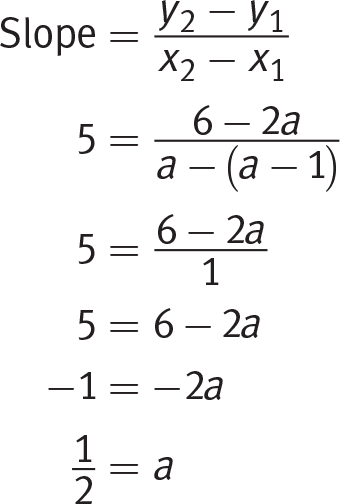
Choice (C) is correct.
10. A
Difficulty: Hard
Category: Heart of Algebra/Systems of Linear Equations
Getting to the Answer: Questions about breaking even usually involve creating a system of equations (one for cost and one for revenue), setting the equations equal to each other, and solving for the variable. Create a system of equations at each price point using n for the number of bathtub lifts. Then solve each system. Note that the cost equation will be the same for both systems, and it is already given to you in the question.
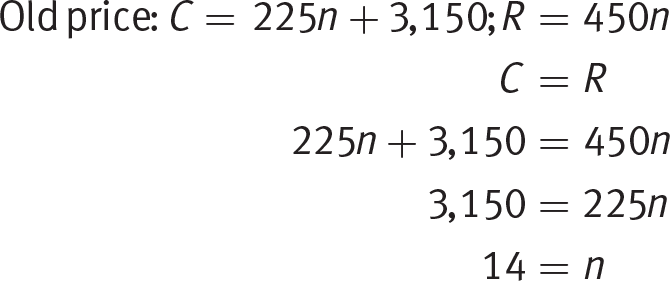
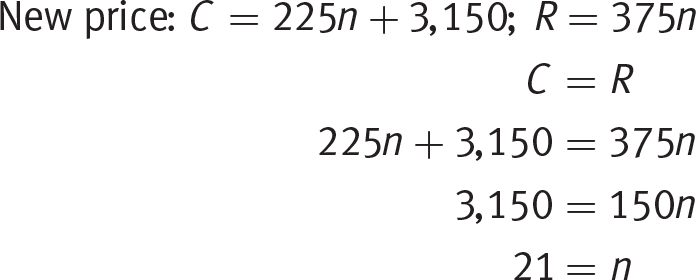
At the old price, the company needed to sell 14 lifts to break even. At the new price, it needs to sell 21 lifts, so it needs to sell 21 − 14 = 7 more lifts at the new price to break even, which is (A).
11. B
Difficulty: Medium
Category: Additional Topics in Math/Geometry
Getting to the Answer: The amount of water needed to create the ice portion of the exhibit is another way of saying the volume of the ice. So, you need to find the volume of the entire space and then subtract the volume of the cylinder that runs through the ice. The volume of a rectangular prism is given by V = l × w × h, and the volume of a cylinder equals the area of its base times its height, or πr 2h. To determine the volume of the ice, start by decomposing the figure into two rectangular prisms and adding their volumes. You can decompose the figure left to right or front to back. Front to back, it looks like the following figure:
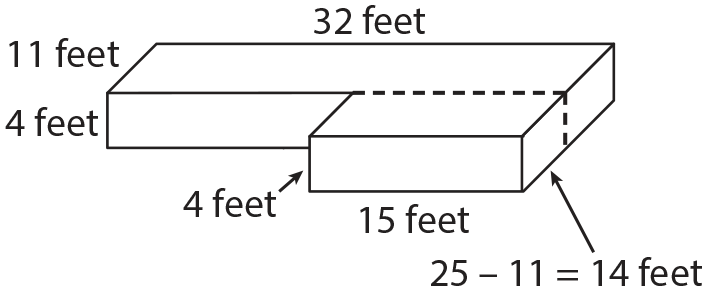
The prism in the back has a volume of 32 × 11 × 4 = 1,408 cubic feet. The prism in the front has a length of 15 feet and a height of 4 feet, but the width is missing. Find the missing width by subtracting 11 from 25, which is 14 feet. So, the volume of the prism in the front is 15 × 14 × 4 = 840 cubic feet. The total volume of the prisms is 1,408 + 840 = 2,248 cubic feet. Be careful—that’s not the answer. You still need to find the amount of space taken up by the glycol pipe and subtract it. The diameter of the pipe is 2 feet, so its radius is 1 foot, and the height (or the length in this question) is 32 feet, so the volume is π(1)2(32) ≈ 100.53 cubic feet. This means the amount of ice needed is 2,248 – 100.53 = 2,147.47, or about 2,150 cubic feet, (B).
12. D
Difficulty: Medium
Category: Problem Solving and Data Analysis/Rates, Ratios, Proportions, and Percentages
Getting to the Answer: Let the units in this question guide you to the answer. You’ll also need to use the answer you found in the previous question. The company will use two hoses, each of which pumps at a rate of 60 gallons per minute, so the rate is actually 120 gallons per minute. Convert the volume you found earlier from cubic feet to gallons, and then use the rate to find the time:

The answers are given in hours and minutes, so write 134 minutes as 2 hours and 14 minutes, or about 2 hours and 15 minutes, which is (D).
13. C
Difficulty: Medium
Category: Passport to Advanced Math/Quadratics
Getting to the Answer: The graph of every quadratic equation is a parabola, which may or may not cross the x-axis, depending on where its vertex is and which way it opens. Don’t forget: if the equation is written in vertex form, y = a(x – h)2 + k, then the vertex is (h, k), and the value of a tells you which way the parabola opens.
The graph of an equation that has no solution does not cross the x-axis, so try to envision the graph of each of the answer choices. When a quadratic is written in factored form, the factors tell you the x-intercepts, which means every quadratic equation that can be written in factored form (over the set of real numbers) must have solutions. This means you can eliminate (B) and (D). Now, imagine the graph of the equation in (A): the vertex is (5, 3) and a is negative, so the parabola opens downward and consequently must cross the x-axis. This means you can eliminate (A), and (C) must be correct. The graph of the equation in (C) has a vertex of (5, 3) and opens up, so it does not cross the x-axis and, therefore, has no solution.
You could also graph each of the answer choices in your graphing calculator, but this is not the most time-efficient way to answer the question.
14. A
Difficulty: Medium
Category: Problem Solving and Data Analysis/Rates, Ratios, Proportions, and Percentages
Getting to the Answer: Questions that involve distance, rate, and time can almost always be solved using the formula Distance = rate × time. Use the speed, or rate, of the plane from Boston, 360 miles per hour, and its distance from Chicago, 864 miles, to determine when it arrived. You don’t know the time, so call it t:
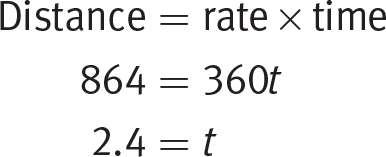
This means it took 2.4 hours for the plane to arrive. This is more than 2 full hours, so multiply 2.4 by 60 to find the number of minutes it took: 60 × 2.4 = 144 minutes. Now, determine how long it took the plane from Kansas City. It left at 8:30 a.m. and arrived at 10:34 a.m., so it took 2 hours and 4 minutes, or 124 minutes. This means the plane from Kansas City arrived 144 – 124 = 20 minutes before the plane from Boston, (A).
15. B
Difficulty: Hard
Category: Problem Solving and Data Analysis/Rates, Ratios, Proportions, and Percentages
Getting to the Answer: Break the question into short steps (first part of trip, second part of trip, circling overhead). To get started, you’ll need to find the distance for each part of the trip—the question only tells you the total distance. Then, use the formula Distance = rate × time to find how long the plane flew at 200 miles per hour and then how long it flew at 450 miles per hour:

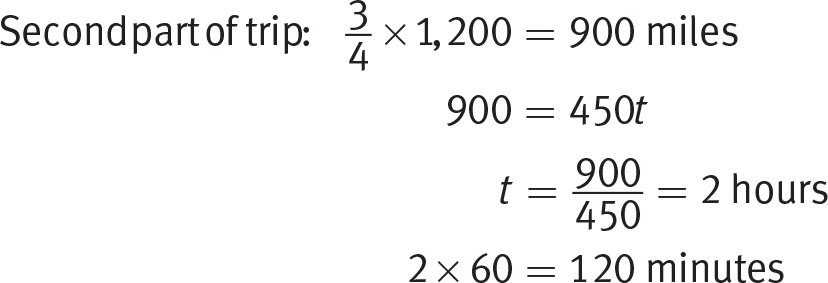
This means the plane flew for a total of 90 + 120 = 210 minutes. Next, add the time the plane circled overhead: 210 + 25 = 235 minutes. The total trip took 235 minutes (3 hours and 55 minutes), which means the plane landed at 8:30 + 3 hours = 11:30 + 55 minutes = 12:25 p.m., (B).
16. A
Difficulty: Medium
Category: Passport to Advanced Math/Functions
Getting to the Answer: The range of a function is the set of possible outputs, or y-values, on a graph. For all real values of any number t, the value of t2 cannot be negative. This means the smallest possible value of t2 is 0 and, consequently, the smallest possible value of h(t) is
/img/mathequationpt2/chpt_mathpt2206.png
 . Thus, the number 1 is not in the range of the function, making (A) correct.
. Thus, the number 1 is not in the range of the function, making (A) correct.
You could also graph the function in your graphing calculator and examine the possible y-values. The graph follows here:

Notice that the lowest point on the graph is (0, 3), which tells you that the range of the function is h(t) ≥ 3.
17. A
Difficulty: Medium
Category: Heart of Algebra/Systems of Linear Equations
Getting to the Answer: Graphically, the solution to a system of equations is the point or points where the graphs intersect. Whenever a graph with no grid lines or axis labels is shown, you are usually interested primarily in the sign of the coordinates of a point, not the actual values. The graphs intersect in Quadrant 2 of the coordinate plane, so the x-value of the point of intersection (or a) is negative, and the y-value (or b) is positive. The question states that a = –3b, so you can eliminate (B) right away—the coordinates would have to be equal if their sum was 0. Now try Picking Numbers. Let b = 1, which means a = –3 and the sum of a + b is –2, which is not one of the answer choices. Try another pair: if b = 2, then a = –6, and the sum is –4. This is still not one of the answer choices, but you should see a pattern—the x-coordinate will always overpower the y-coordinate, resulting in a negative sum, so the correct answer must be (A).
18. B
Difficulty: Medium
Category: Problem Solving and Data Analysis/Statistics and Probability
Getting to the Answer: When comparing two data sets for consistency, consider both the data center (mean or median) and the spread (standard deviation or range). Each set of data has a median of 0, and thermostat A also has a mode of 0. Both of these measures indicate good test results. However, thermostat A has a greater range of data. If the company chooses this thermostat, the cooling fan is likely to engage anywhere from –9 degrees below the target temperature to 10 degrees above the target temperature. Although this is within the safe temperature range, it is not as consistent as thermostat B, which engaged the fan within 6 degrees on either side of the target temperature. This means (B) is correct.
19. C
Difficulty: Medium
Category: Passport to Advanced Math/Quadratics
Getting to the Answer: When a quadratic function is written in factored form, you can find its zeros by setting each factor equal to 0 and solving for the variable. Each of the answer choices is written in factored form, so mentally solve each one by asking yourself what number would make each factor equal to 0. Then find the sum of the results:
Choice (A): 3 + (−3) ≠ −3. Eliminate.
Choice (B): 4 + (−1) ≠ −3. Eliminate.
Choice (C): 1 + (−4) = −3, so (C) is correct.
Choice (D): 6 + (−3) ≠ −3. Eliminate.
20. D
Difficulty: Hard
Category: Passport to Advanced Math/Functions
Getting to the Answer: A constant added or subtracted inside a function will shift the function left or right, while a constant added or subtracted from the outside will shift the function up or down. You’re looking for the value of p(0), but the graph shows p(x) – 4, which means the original graph has been shifted down 4 units. You’ll need to find the y-value of the graph when x = 0, then add 4 to get back up to the original function. The graph passes through the point (0, 7), so p(0) – 4 = 7. Add 4 to both sides of the equation to get p(0) = 7 + 4 = 11, which is (D).
21. A
Difficulty: Medium
Category: Heart of Algebra/Linear Equations
Getting to the Answer: Sometimes writing an equation is the quickest route to answering a question. Assign a variable to the unknown, write the equation in words, and then translate from English into math. The unknown in this question is the number of times Geraldine can wrap the wire around the prism. Call this n. Now, write an equation in words: total amount of wire equals distance around the prism times the number of wraps plus the extra on the ends. To fill in the numbers, you’ll need to make a few calculations. Because the dimensions of the prism are given in inches, convert the amount of wire to inches as well: 18 feet is equal to 18 × 12 = 216 inches. Next, figure out the distance around the prism using the picture. Don’t forget, you have to go all the way around: 1.5 + 3.5 + 1.5 + 3.5 = 10 inches. Finally, read the question again to determine that the extra on the ends is 3 + 3 = 6 inches. Now, you’re ready to translate from English into math to write your equation and then solve it:
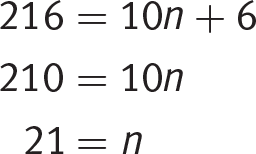
Geraldine can wrap the wire around the prism 21 times, which matches (A).
22. A
Difficulty: Medium
Category: Problem Solving and Data Analysis/Statistics and Probability
Getting to the Answer: To find a percent change (increase or decrease), use the percent change formula:

The question asks about the increase from July to August, so the original amount is the July harvest of squash and the new amount is the August harvest. Read the graph’s key and the axis labels carefully. Each grid line represents 5 tons, so the July squash harvest was 15 tons and the August harvest was 25 tons. Substitute these numbers into the percent change formula and simplify:

The percent increase is about 67 percent, which matches (A).
23. D
Difficulty: Medium
Category: Problem Solving and Data Analysis/Rates, Ratios, Proportions, and Percentages
Getting to the Answer: Add reasonable numbers to the graph to help you answer the question. An example follows:
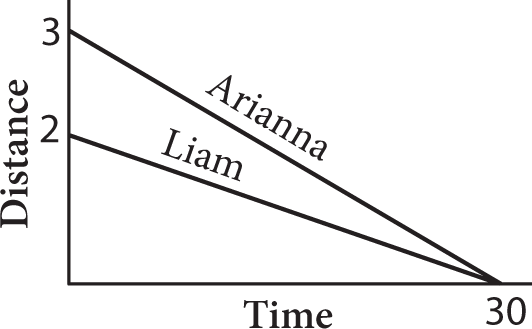
Use the numbers to help you evaluate each statement. It took Liam and Arianna each 30 minutes to walk home, so (A) and (B) are incorrect. Arianna walked 3 miles in 30 minutes, while Liam only walked 2 miles in 30 minutes; their rates are not the same, so (C) is also incorrect. This means (D) must be true. Arianna started out farther away than Liam, so she must have walked at a faster rate to arrive at home in the same amount of time.
24. B
Difficulty: Medium
Category: Heart of Algebra/Linear Equations
Getting to the Answer: The slopes between sets of points that lie on the same line are equal. You can find the slope between points using the slope formula or by looking for patterns. Before immediately jumping to the slope formula, take a peek at the answer choices—all the x-coordinates of the points are multiples of 4, so looking for a pattern is the quickest way to answer this question. It may help to put all the points in a table (including those given in the question stem), with the x-coordinates arranged from smallest to largest, and then see which point doesn’t fit the pattern.
| x | y |
|---|---|
| −4 | −8 |
| 0 | −5 |
| 4 | −1 |
| 8 | 1 |
| 12 | 4 |
| 16 | 7 |
Notice that all the x-coordinates increase by 4, while most of the y-coordinates increase by 3. For the slope between each pair of points to be equal, the y-coordinate at x = 4 would need to be –2, not –1, so the point given in (B) does not lie on the line.
25. A
Difficulty: Medium
Category: Problem Solving and Data Analysis/Statistics and Probability
Getting to the Answer: Identify which pieces of information from the table you need. The question asks for the probability that a randomly chosen person from the study is employed and has a college degree, so you need the total of both females and males with college degrees who are employed compared to all the participants in the study. There are 188 employed females with a college degree and 177 employed males with a college degree for a total of 365 employed people with a college degree out of 800 participants, so the probability is
/img/mathequationpt2/chpt_mathpt2212.png
 , which reduces to
/img/mathequationpt2/chpt_mathpt2213.png
, which reduces to
/img/mathequationpt2/chpt_mathpt2213.png
 . (A) is correct.
. (A) is correct.
26. B
Difficulty: Medium
Category: Problem Solving and Data Analysis/Scatterplots
Getting to the Answer: Translate from English into math. The number of cells in the original sample means the value of the function at 0 hours, or f(0). The first x-value on the graph is 4, not 0, so you’ll need to use the values shown in the calculator screenshot to write an equation for the model. Notice that the y-values in the calculator screenshot double as the x-values increase by 1. This means that the model is an exponential growth function of the form
/img/mathequationpt2/chpt_mathpt2214.png
 . Choose a point from the calculator screenshot such as (4, 136), substitute the values into the function, and solve for f(0):
. Choose a point from the calculator screenshot such as (4, 136), substitute the values into the function, and solve for f(0):

The y-axis title tells you that the numbers are given in thousands, so there were 8,500 white blood cells per microliter in the original sample. (B) is correct.
You could also work backward from the calculator screenshot by dividing by 2 four times (from 4 hours to 3 hours, 3 hours to 2 hours, 2 hours to 1 hour, and 1 hour to before the patient contracted the disease). The result is 136 ÷ 24 = 136 ÷ 16 = 8.5, which in thousands is 8,500, again matching choice (B).
27. D
Difficulty: Hard
Category: Additional Topics in Math/Geometry
Getting to the Answer: Drawing a sketch is the key to answering this question. Your sketch might look like the one below:
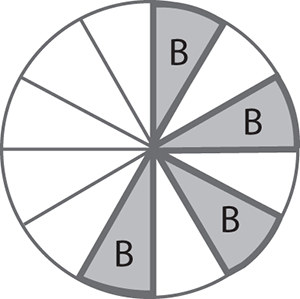
Notice that two radii and an arc form each section, so the amount of steel needed for one section is the length of the radius times 2, plus the length of the outer arc. Once you know this, you can simply multiply by 4.
You are given the total area, which means you can find the radius by substituting 64π for A in the area formula, A = πr 2:
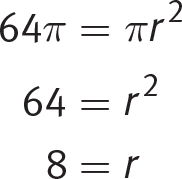
For auctions, the arena is divided into 12 equal sections through the center, so divide 360 by 12 to find that the central angle measure for each section is 30 degrees. Now, use the arc length formula:
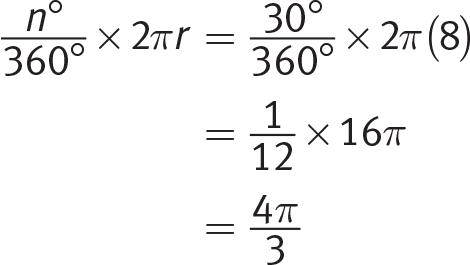
The amount of steel needed for one section is
/img/mathequationpt2/chpt_mathpt252.png
 , so the amount needed for all four sections is
/img/mathequationpt2/chpt_mathpt2218.png
, so the amount needed for all four sections is
/img/mathequationpt2/chpt_mathpt2218.png
 , which is (D).
, which is (D).
28. A
Difficulty: Hard
Category: Heart of Algebra/Linear Equations
Getting to the Answer: To write the equation of a line, you need two things—the starting amount (y-intercept) and the rate of change (slope). Substitute these values into slope-intercept form of a line (y = mx + b), and you have your equation.
The initial amount of water in the tank on Saturday is 70 gallons, so you already know b. To find m, you’ll need to use the information given in the question to write two data points.
The amount of water in the tank depends on how long Lena has been filling it, so the number of gallons is the dependent variable and time is the independent variable. This tells you that the data points should be written in the form (time, gallons). At time = 0 on Saturday, the number of gallons is 70, so the data point is (0, 70). After 1 hour and 50 minutes, which is 60 + 50 = 110 minutes, the tank is full (400 gallons), so another data point is (110, 400). Now, use the slope formula to find that the rate of change is
/img/mathequationpt2/chpt_mathpt2219.png
 gallons per minute. Substituting m and b into slope-intercept form results in the equation y = 3x + 70, so (A) is correct.
gallons per minute. Substituting m and b into slope-intercept form results in the equation y = 3x + 70, so (A) is correct.
29. D
Difficulty: Hard
Category: Problem Solving and Data Analysis/Rates, Ratios, Proportions, and Percentages
Getting to the Answer: You need to find the ratio of small units to large units. You’re given two ratios: small to medium and medium to large. Both of the given ratios contain medium size units, but the medium amounts (5 and 3) are not identical. To directly compare them, find a common multiple (15). Multiply each ratio by the factor that will make the number of medium units equal to 15:
small to medium: (3:5) × (3:3) = 9:15
medium to large: (3:2) × (5:5) = 15:10
Now that the number of medium units needed is the same in both ratios, you can merge the two ratios to compare small to large directly: 9:15:10. Therefore, the proper ratio of small units to large units is 9:10, which is (D).
30. A
Difficulty: Hard
Category: Problem Solving and Data Analysis/Rates, Ratios, Proportions, and Percentages
Getting to the Answer: Think of the rate given in the question in terms of the constant term you see on the right-hand side of the equation. Working together, the two air purifiers can clean the air in 7 hours. This is equivalent to saying that they can clean
/img/mathequationpt2/chpt_mathpt2222.png
 of the air in 1 hour. If
/img/mathequationpt2/chpt_mathpt2223.png
of the air in 1 hour. If
/img/mathequationpt2/chpt_mathpt2223.png
 is the portion of the air the two purifiers can clean together in 1 hour, then each term on the left side of the equation represents the portion that each purifier can clean individually in 1 hour. Because the new model is 3 times as fast as the older model,
/img/mathequationpt2/chpt_mathpt2224.png
is the portion of the air the two purifiers can clean together in 1 hour, then each term on the left side of the equation represents the portion that each purifier can clean individually in 1 hour. Because the new model is 3 times as fast as the older model,
/img/mathequationpt2/chpt_mathpt2224.png
 represents the portion of the air the new model can clean in 1 hour, and
/img/mathequationpt2/chpt_mathpt2225.png
represents the portion of the air the new model can clean in 1 hour, and
/img/mathequationpt2/chpt_mathpt2225.png
 represents the portion of the air the older model can clean in 1 hour, which is (A).
represents the portion of the air the older model can clean in 1 hour, which is (A).
31. 9/26 or .346
Difficulty: Easy
Category: Heart of Algebra/Linear Equations
Getting to the Answer: Distribute the fractions because the numbers inside each set of parentheses are evenly divisible by the denominators of the fractions by which they are being multiplied:
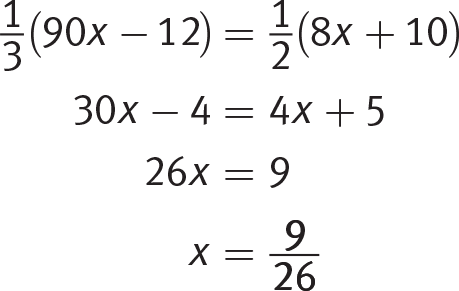
32. 4
Difficulty: Medium
Category: Passport to Advanced Math/Exponents
Getting to the Answer: When solving any type of equation, you should always think of inverse operations. The inverse of raising a quantity to the
/img/mathequationpt2/chpt_mathpt252a.png
 power is raising it to the
/img/mathequationpt2/chpt_mathpt2230.png
power is raising it to the
/img/mathequationpt2/chpt_mathpt2230.png
 power. Eliminate the exponent using inverse operations and then go from there:
power. Eliminate the exponent using inverse operations and then go from there:
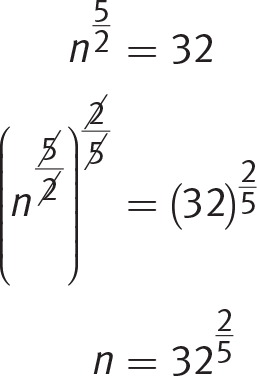
Now, you have two choices—you can enter this value into your calculator as 32^(2/5) or you can evaluate the number using rules of exponents:

33. 801
Difficulty: Hard
Category: Problem Solving and Data Analysis/Rates, Ratios, Proportions, and Percentages
Getting to the Answer: Draw a chart or diagram detailing the various price reductions for each 30-day period. You’ll need to make several calculations, so don’t round until the final answer.
| Date | Percent of Most Recent Price | Resulting Price |
|---|---|---|
| Jan. 15 | 100 – 40% = 60% | $1,848 × 0.6 = $1,108.80 |
| Feb. 1 | 100 – 15% = 85% | $1,108.80 × 0.85 = $942.48 |
| March 1 | 100 – 15% = 85% | $942.48 × 0.85 = $801.108 |
You can stop here because the item was sold on March 10th. Before gridding in your answer, check that $801 is not less than 30% of the original price: 0.30 × $1,848 = $554.40. It’s not, so the final selling price, rounded to the nearest whole dollar, was $801.
34. 2/3 or .666 or .667
Difficulty: Hard
Category: Additional Topics in Math/Trigonometry
Getting to the Answer: Two angles of the triangle have equal measures, so the triangle is isosceles, which means that drawing an altitude from the top to the base will bisect the base, resulting in two smaller right triangles as shown here:

Now, use
/img/mathequationpt2/chpt_mathpt2159u.png
 to find that
/img/mathequationpt2/chpt_mathpt2159i.png
to find that
/img/mathequationpt2/chpt_mathpt2159i.png
 , which can be simplified to
/img/mathequationpt2/chpt_mathpt2232.png
, which can be simplified to
/img/mathequationpt2/chpt_mathpt2232.png
 .
.
35. 3.5 or 7/2
Difficulty: Hard
Category: Heart of Algebra/Linear Equations
Getting to the Answer: Remember that parallel lines have the same slope. Use the slope formula
/img/mathequationpt2/chpt_mathpt2234.png
 to find the slope of
/img/mathequationpt2/chpt_mathpt252.png
to find the slope of
/img/mathequationpt2/chpt_mathpt252.png
 . Because
/img/mathequationpt2/chpt_mathpt2159o.png
. Because
/img/mathequationpt2/chpt_mathpt2159o.png
 passes through the points (0, 0) and (2, 4.5), its slope is
/img/mathequationpt2/chpt_mathpt2236.png
passes through the points (0, 0) and (2, 4.5), its slope is
/img/mathequationpt2/chpt_mathpt2236.png
 . Line B has the same slope and passes through (0, –1), so you can use the slope formula again to find the y-coordinate of the given point, (2, y):
. Line B has the same slope and passes through (0, –1), so you can use the slope formula again to find the y-coordinate of the given point, (2, y):
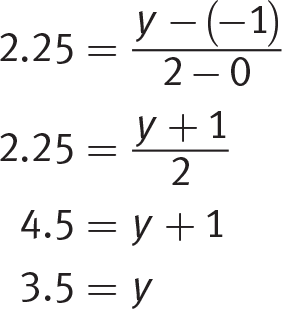
The y-coordinate of the point is 3.5.
36. 3/10
Difficulty: Hard
Category: Problem Solving and Data Analysis/Rates, Ratios, Proportions, and Percentages
Getting to the Answer: Whenever rates are given in different units, start by converting to the same units. In most cases, converting to the smaller unit avoids fractions and decimals. Start with nickel because the weight is already in ounces: $10.08 ÷ 24 = $0.42 per ounce. Now, find the per-ounce rate for copper. There are 16 ounces in one pound, so three pounds is 48 ounces: $8.64 ÷ 48 = $0.18 per ounce. So, if a person were to bring in equal amounts of each, he would receive $0.18 per ounce of copper and $0.42 per ounce of nickel. To find the fractional portion he would receive from the copper, set up a comparison between the amount received for copper and the total amount received, $0.18 + $0.42 = $0.60. The portion of the total amount he receives from copper would be
/img/mathequationpt2/chpt_mathpt252.png
 , which reduces to
/img/mathequationpt2/chpt_mathpt2238.png
, which reduces to
/img/mathequationpt2/chpt_mathpt2238.png
 .
.
37. 3
Difficulty: Easy
Category: Problem Solving and Data Analysis/Scatterplots
Getting to the Answer: Each grid line along the vertical axis represents 5 units, so look for points that are at least two grid lines away from the line of best fit. The people who have BMIs of 20, 25, and 28 have LDLs that are 10 or more milligrams per deciliter greater than the LDLs predicted by the line of best fit. This represents 3 people.
38. 24
Difficulty: Medium
Category: Problem Solving and Data Analysis/Scatterplots
Getting to the Answer: A line of best fit serves as an approximation of data from which you can estimate an output for a given input (or vice versa). The key is in reading the axis labels carefully. To determine the requested BMI, find the LDL level of 140 (which is already reported in milligrams per deciliter) on the vertical axis. The question says “Based on the line of best fit,” so trace over to the line (not to the closest data point) and then down to the corresponding value on the horizontal axis, which represents BMI. You should end up just slightly to the right of the 24 line. Be sure to follow directions. The closest whole number approximation is 24.
| 4—Advanced |
|
| 3—Proficient |
|
| 2—Partial |
|
| 1—Inadequate |
|
Anyone who watches NFL football every Sunday is most likely aware that the athletes on the field make a significant amount of money for their efforts. The NFL generates a lot of income from television contracts, corporate sponsors, and advertisers, and the teams themselves benefit from ticket and merchandise sales. The players in turn are paid market-appropriate salaries. Anyone who watches college football games on Saturday will see similar, if slightly younger athletes, yet how much are those players making? The author of this article correctly notes these players don’t earn a salary, and that’s something he would like to correct. His argument? College athletes deserve compensation for their work just like any other employee.
The author begins by detailing how much money corporations, athletic conferences, and universities make from advertising and sponsor revenue. The Pacific-12 conference, for example, “signed television rights deals worth $3 billion.” Speaking of television, CBS and Turner Broadcasting made a lot of money as well—thirty seconds of commercial advertising during the Final Four cost $700,000. Schools with successful programs also do well. The article points out that the University of Texas football program netted $77.9 million in 2011–2012.
The author uses this evidence to portray corporations, athletic conferences, and universities as the “unscrupulous tycoons from a Dickens novel.” Those familiar with Dickens can picture more than one wealthy character who doesn’t care for the working poor left eking out miserable lives in relative poverty. And who are these working poor? Student athletes, of course! The author uses the Dickens metaphor to convince the reader that corporations, athletic conferences, and universities do not have the student athletes’ interests at heart. He then pivots to how much the athletes make for their efforts on behalf of the “unscrupulous tycoons”—absolutely nothing.
How much is the average student scholarship worth? According to the author, most leave a few thousand dollars in yearly out-of-pocket expenses to the student in spite of an average “forty hours a week” dedicated to their sport. And if an athlete is unable to play due to injury, even that scholarship money can be revoked. The author uses this information to compare a student athlete with an employee who benefits from federal and state labor laws. The comparison is painfully clear and made even more so when the author points out that student athletes do not have the right to unionize.
Throughout his essay, the author has effectively painted a Dickensian picture in which student athletes literally sweat, strain, and toil under the watchful eye of their universities, while those in power rake in millions of dollars. The evidence presented convincingly leads the reader to one conclusion: that student athletes deserve to be compensated.
Anyone who watches NFL football Sunday knows that those players make a lot of money. They make so much money because the teams and the league make money from television and advertising. But what about college football players or other college athletes? They don’t make any money at all. The author thinks that isn’t right. He argues that student athletes should get paid for their work just like anyone else.
The author talks about how much money schools, conferences, and corporations make off of college sports. It’s a lot of money. For example, a television deal was worth $3 billion for the Pacific-12 conference, and it cost $700,000 for a television commercial during the Final Four basketball tournament. The author includes this to make the point that other people make a lot of money, but student athletes don’t. This helps the reader feel some sympathy for the players and supports the author’s argument that they should be paid.
The author then turns to a comparison of student athletes and employees. Student athletes don’t earn salaries. They do get a scholarship, but that still leaves many of them short of money to pay the bills. They work forty hours a week. If they are hurt, then they may lose their scholarship because they can’t play. The author talks about this to compare how student athletes earn money with how typical employees earn money. Employees have legal rights, but student athletes don’t really have any. This is a good comparison, and it makes the reader believe that student athletes should be paid like employees, which is the author’s concluding point.